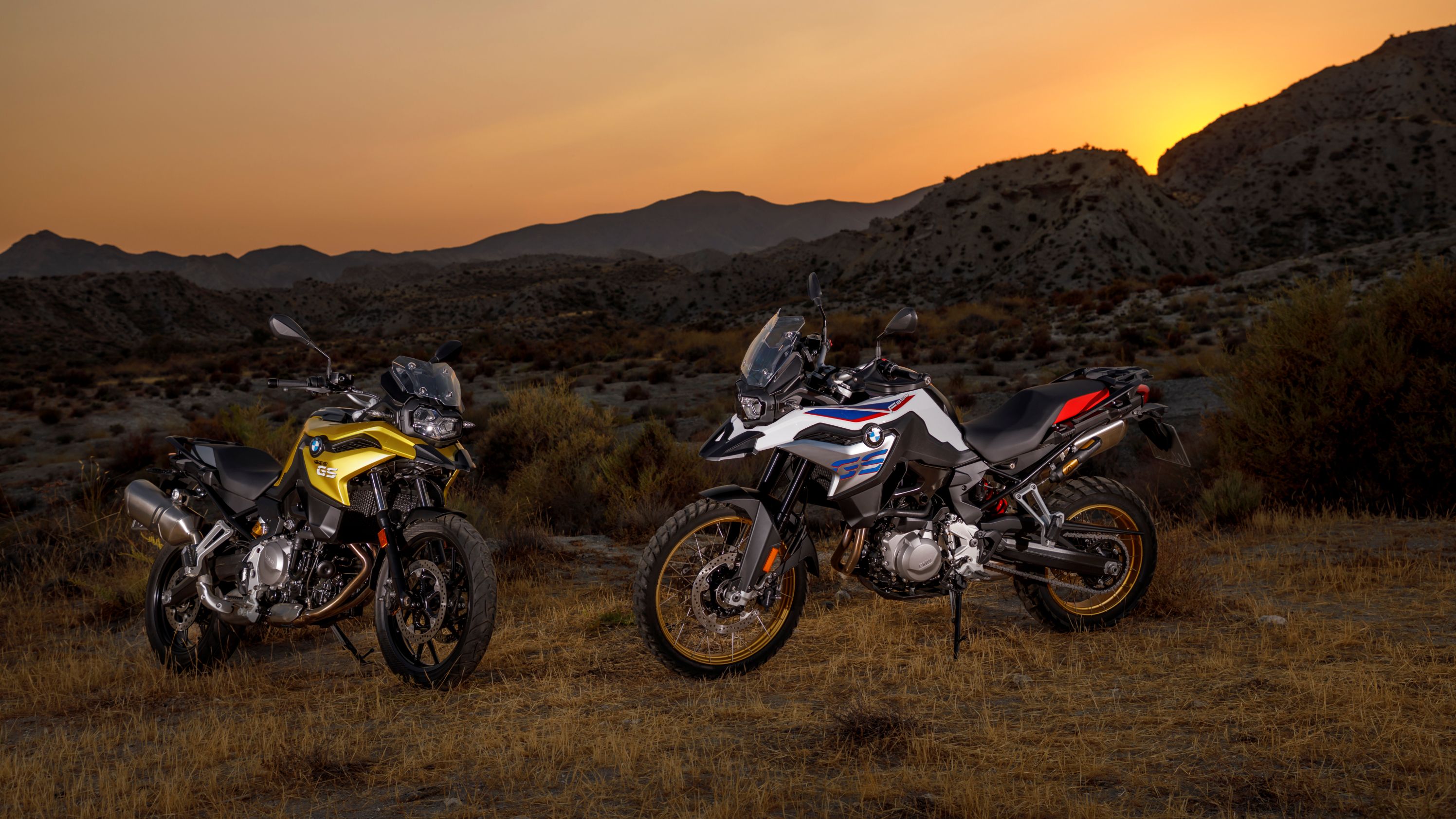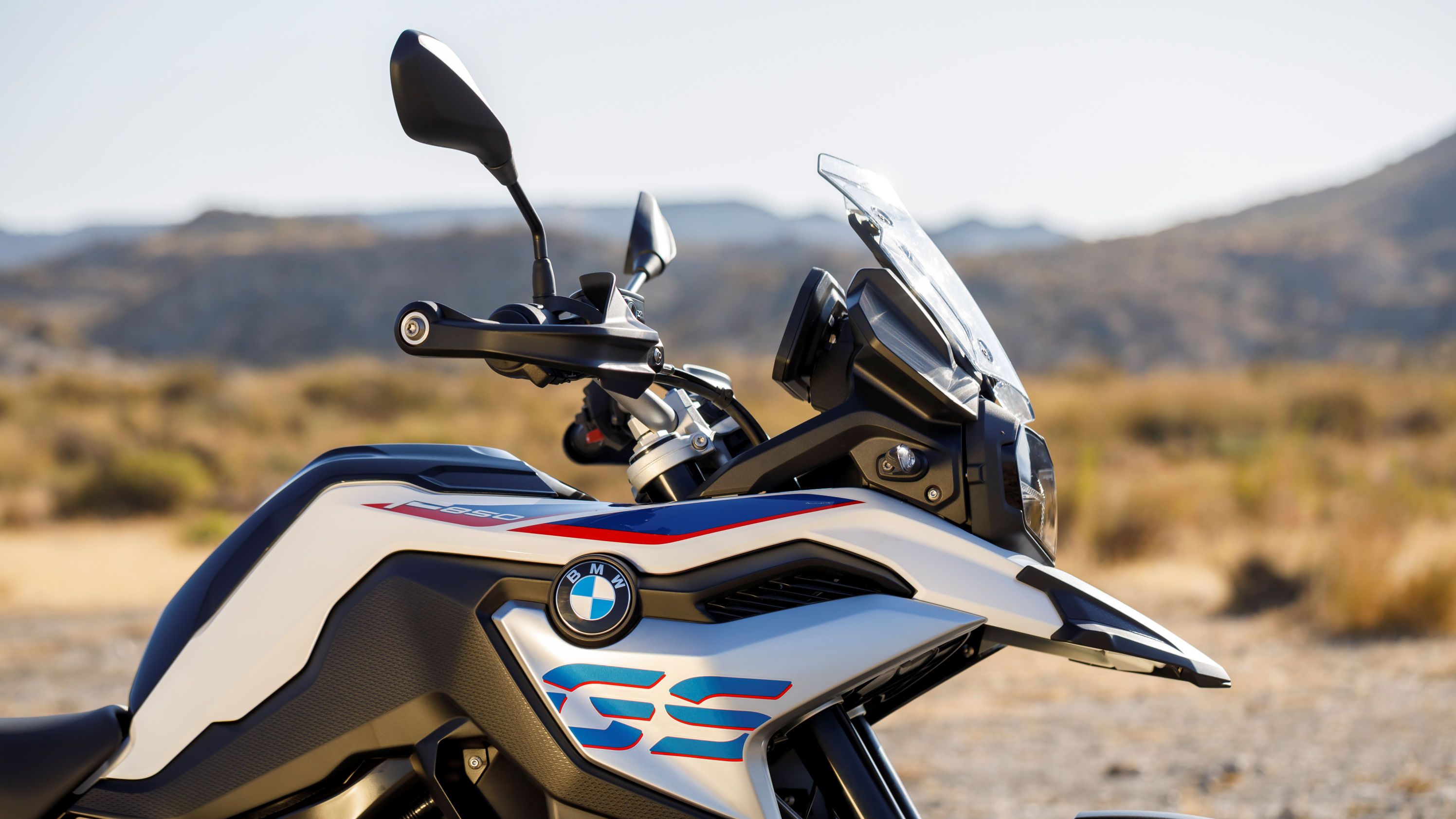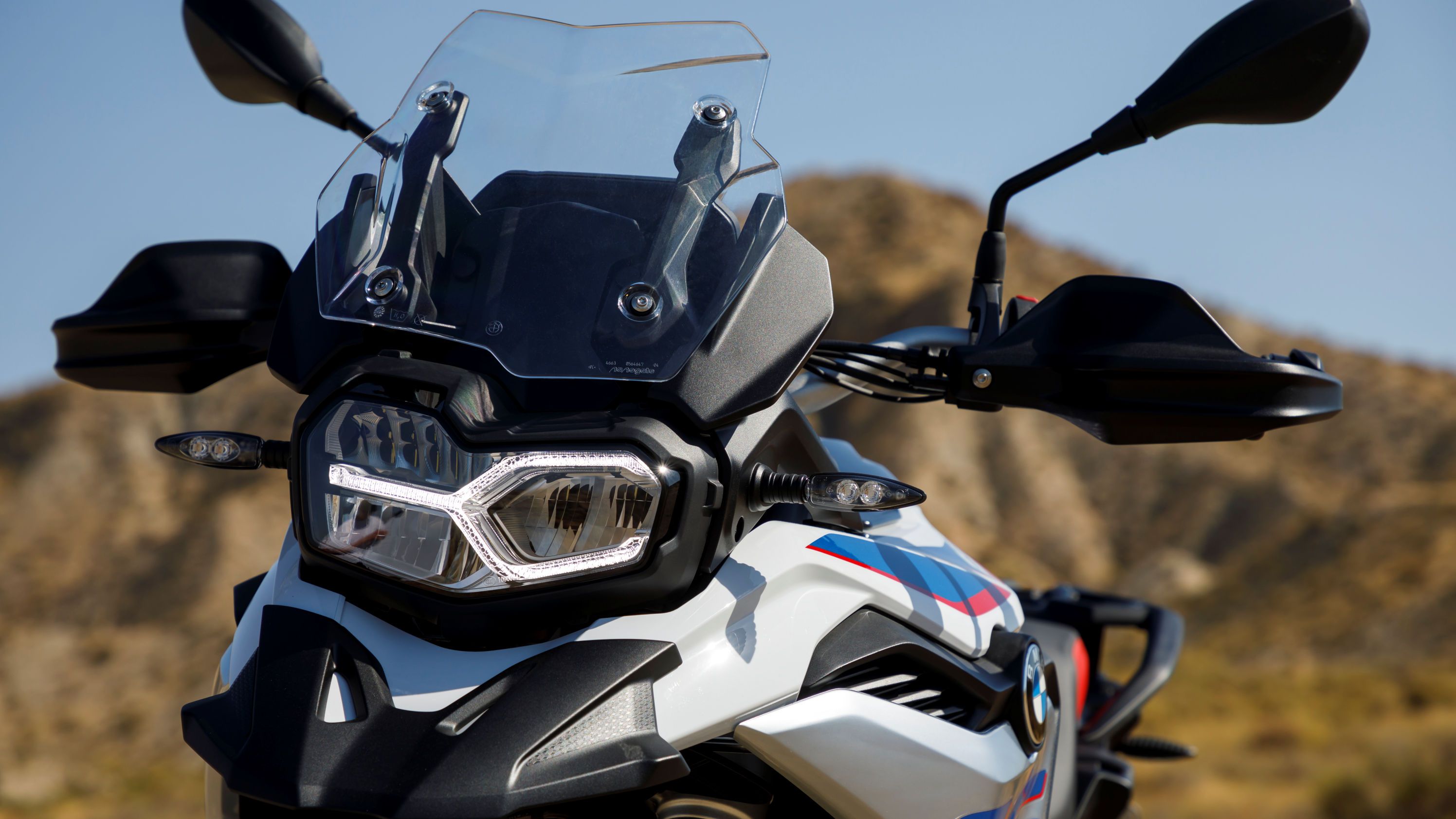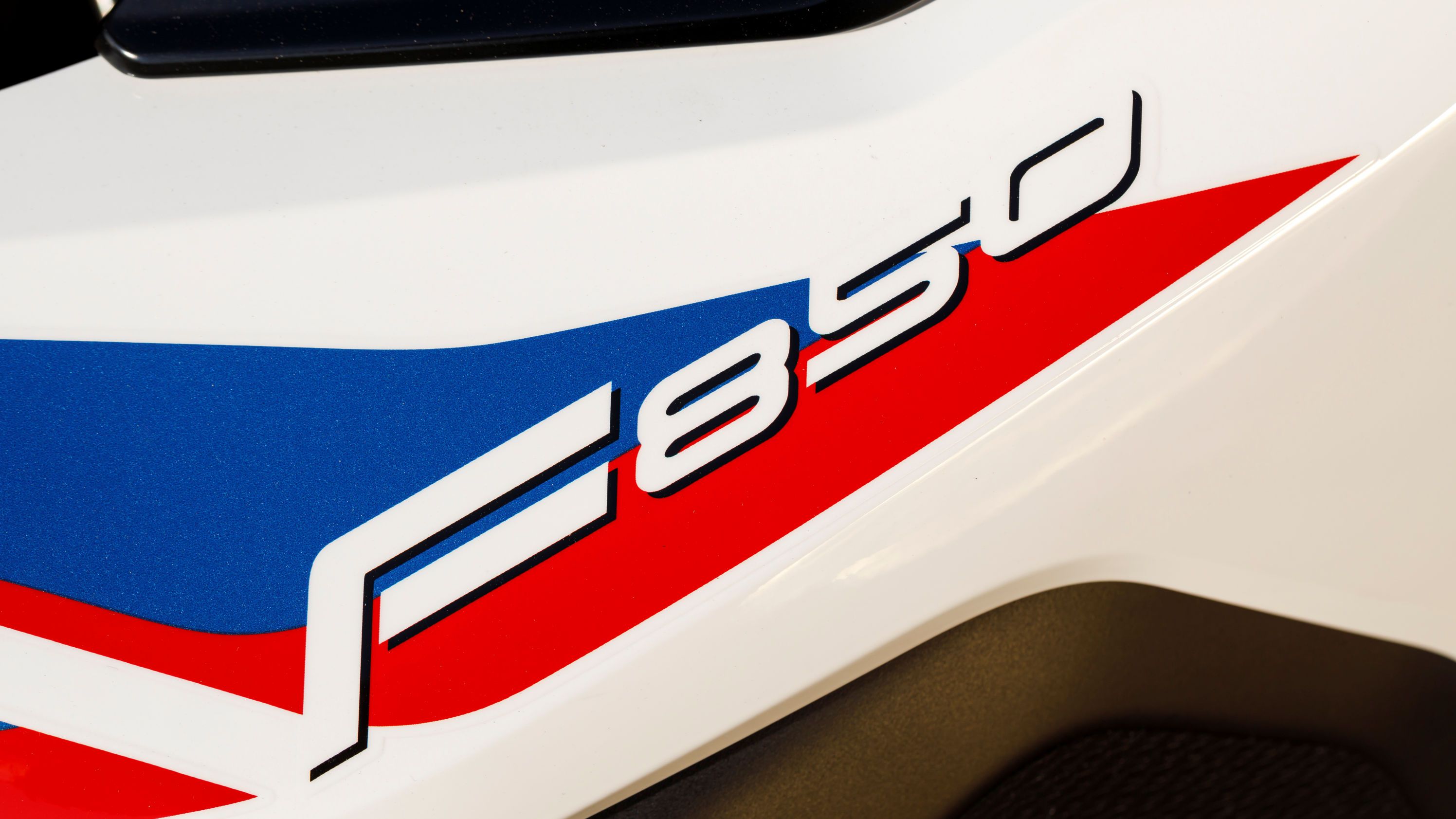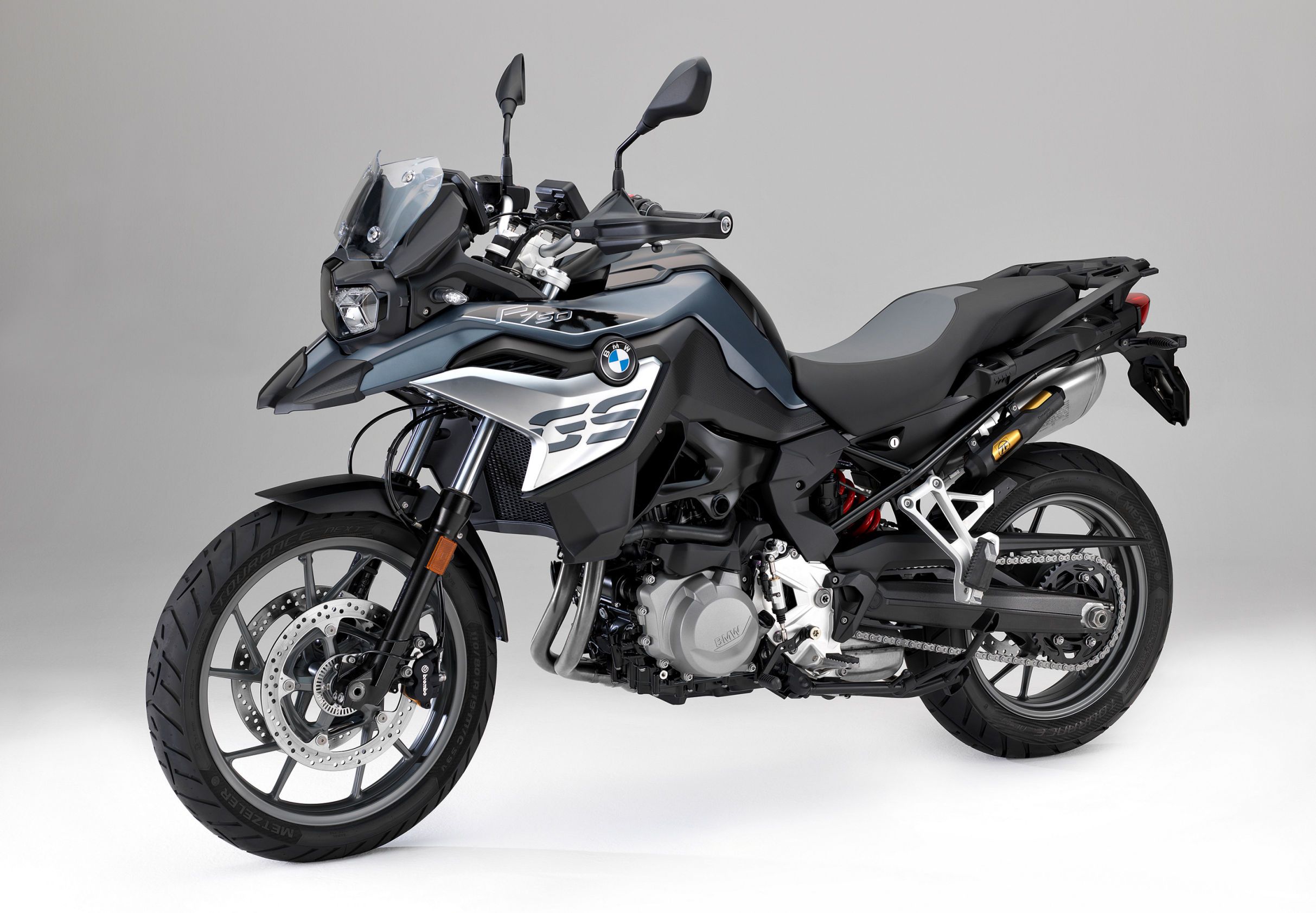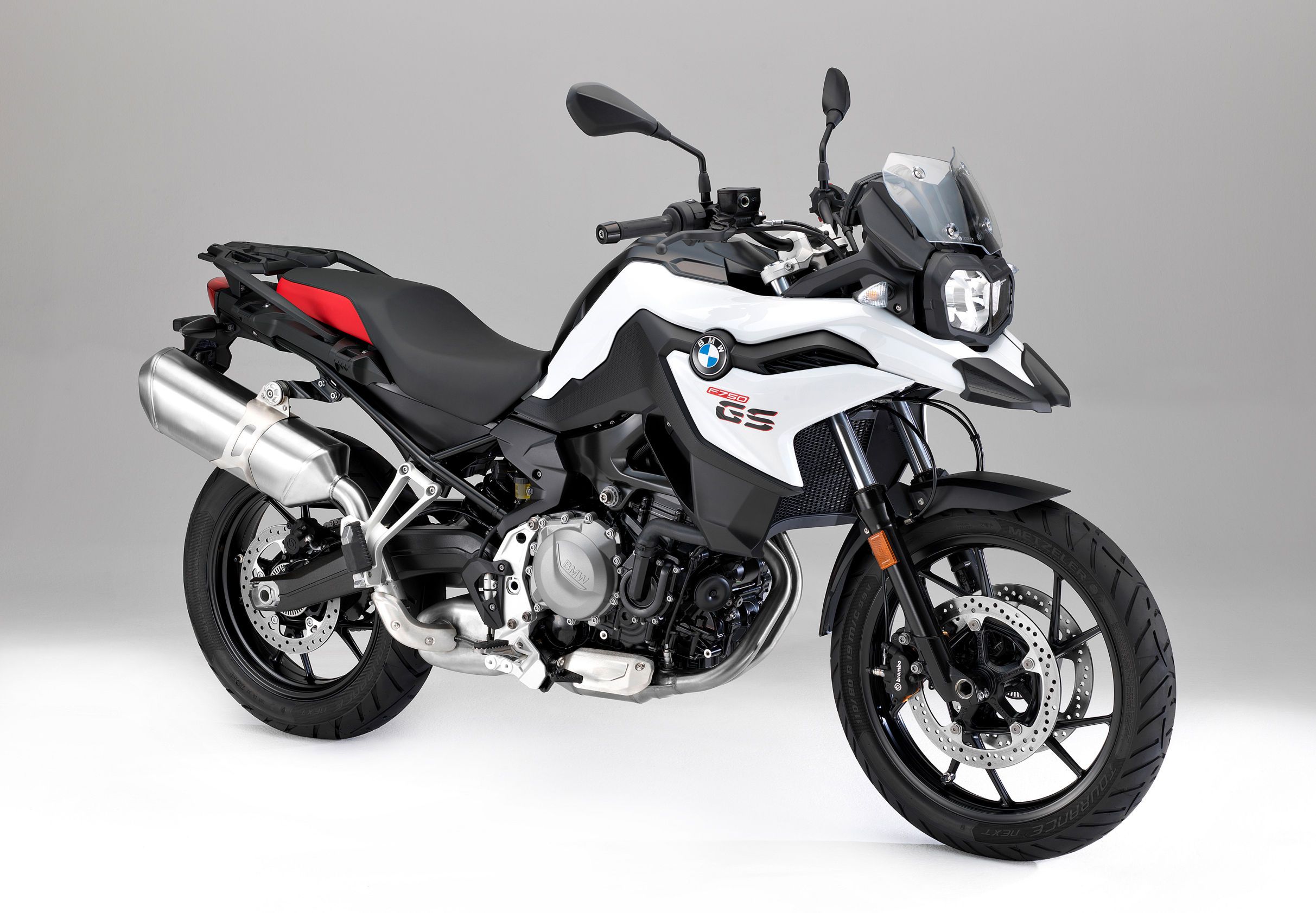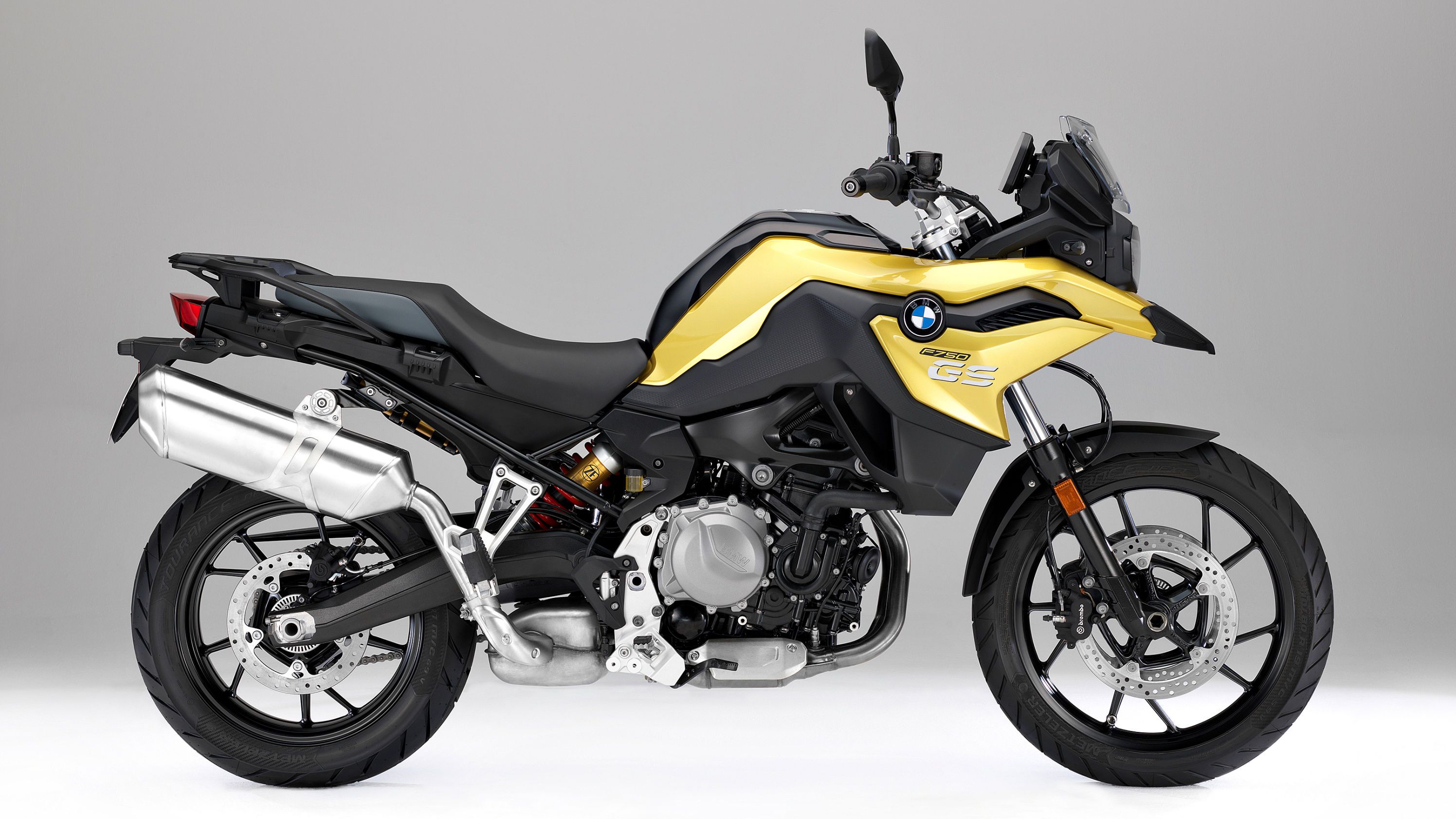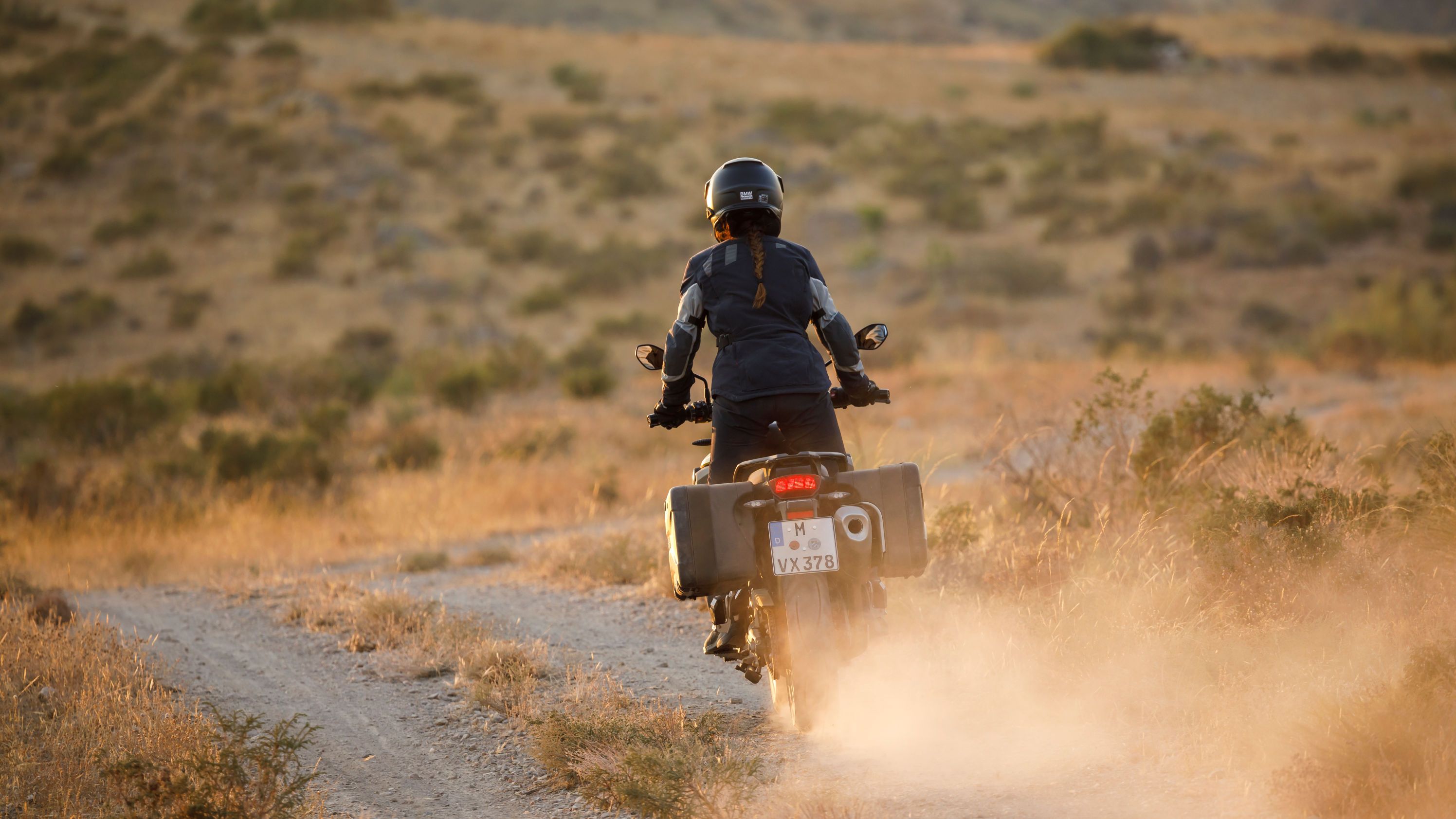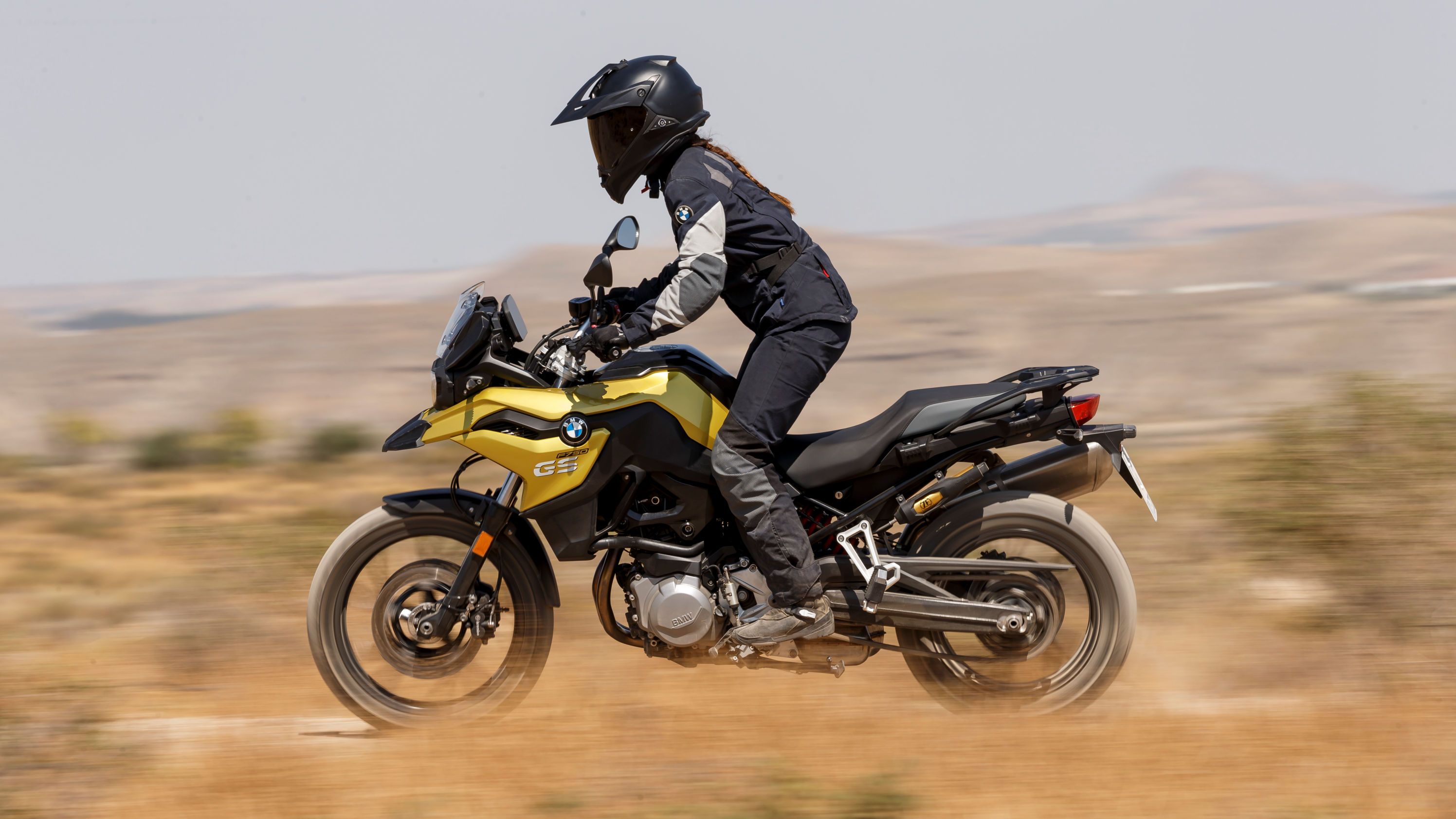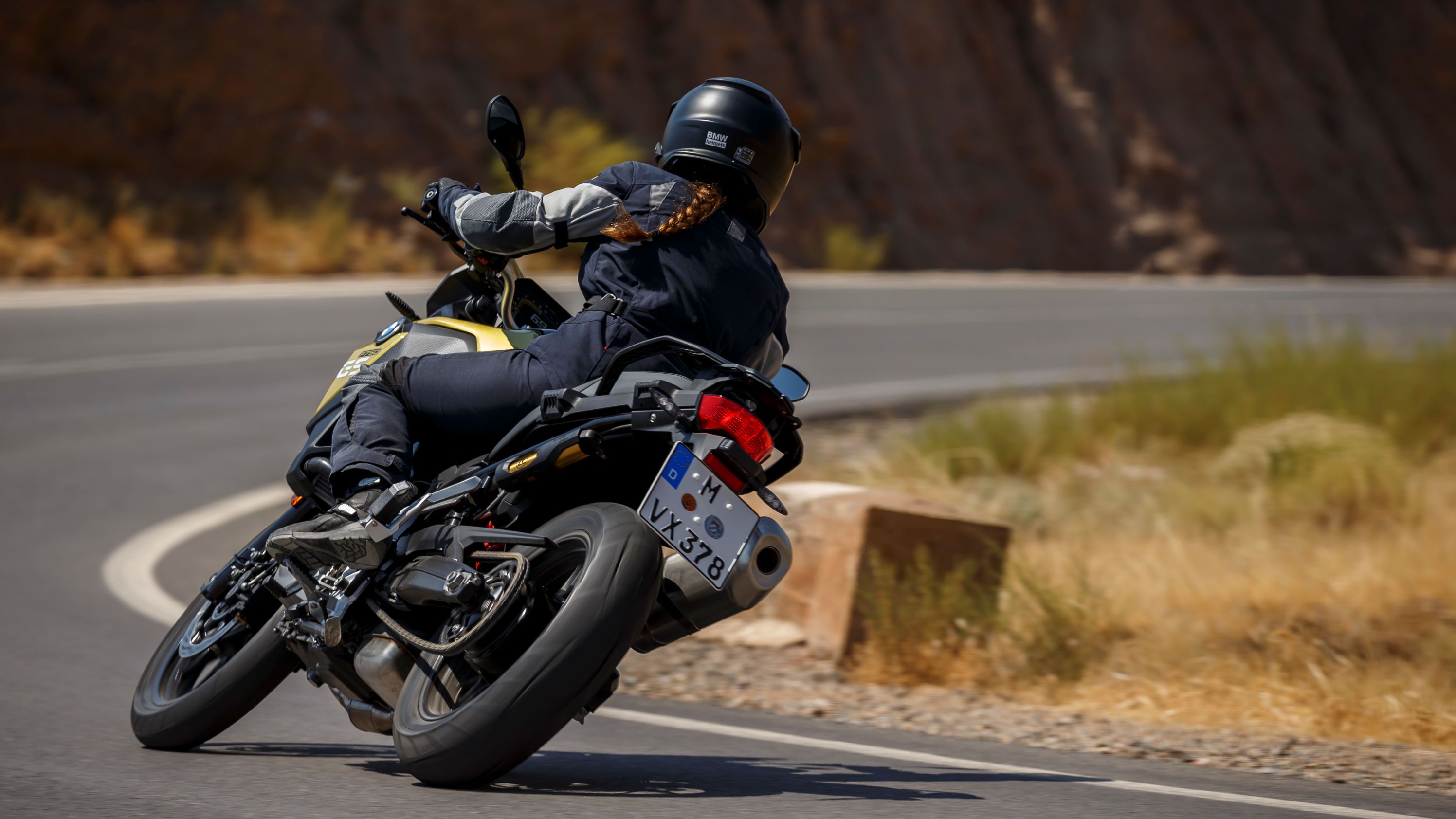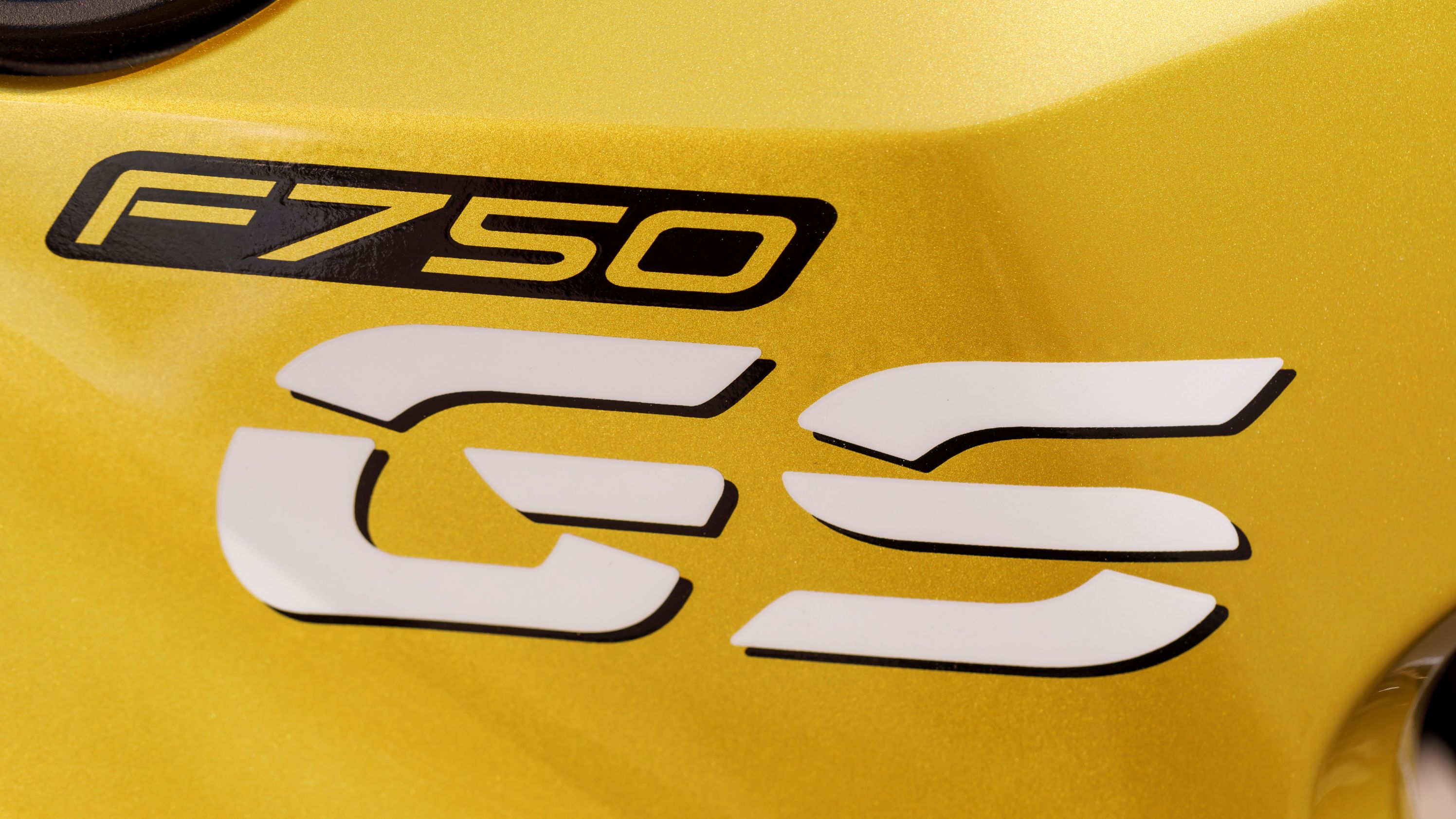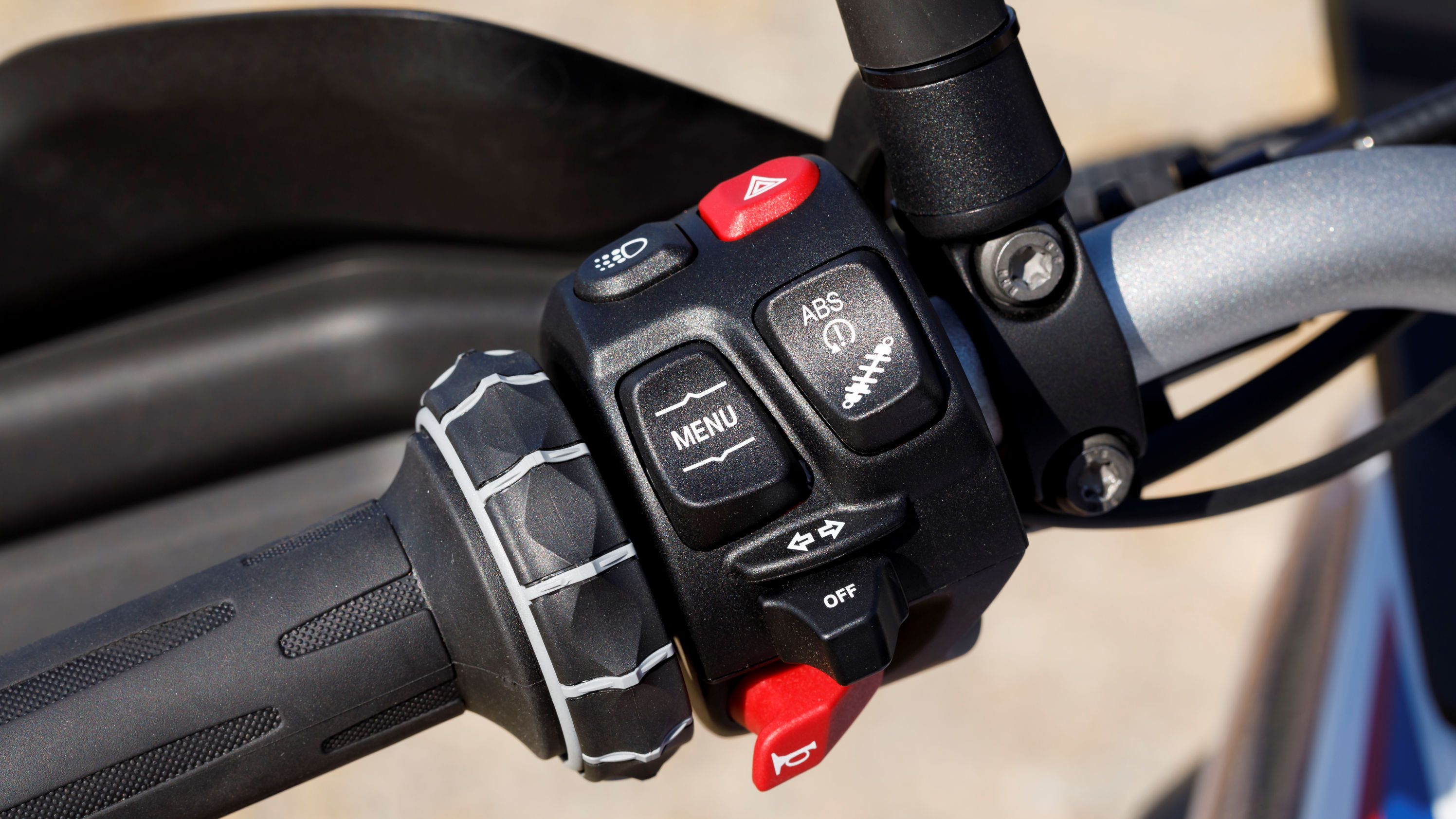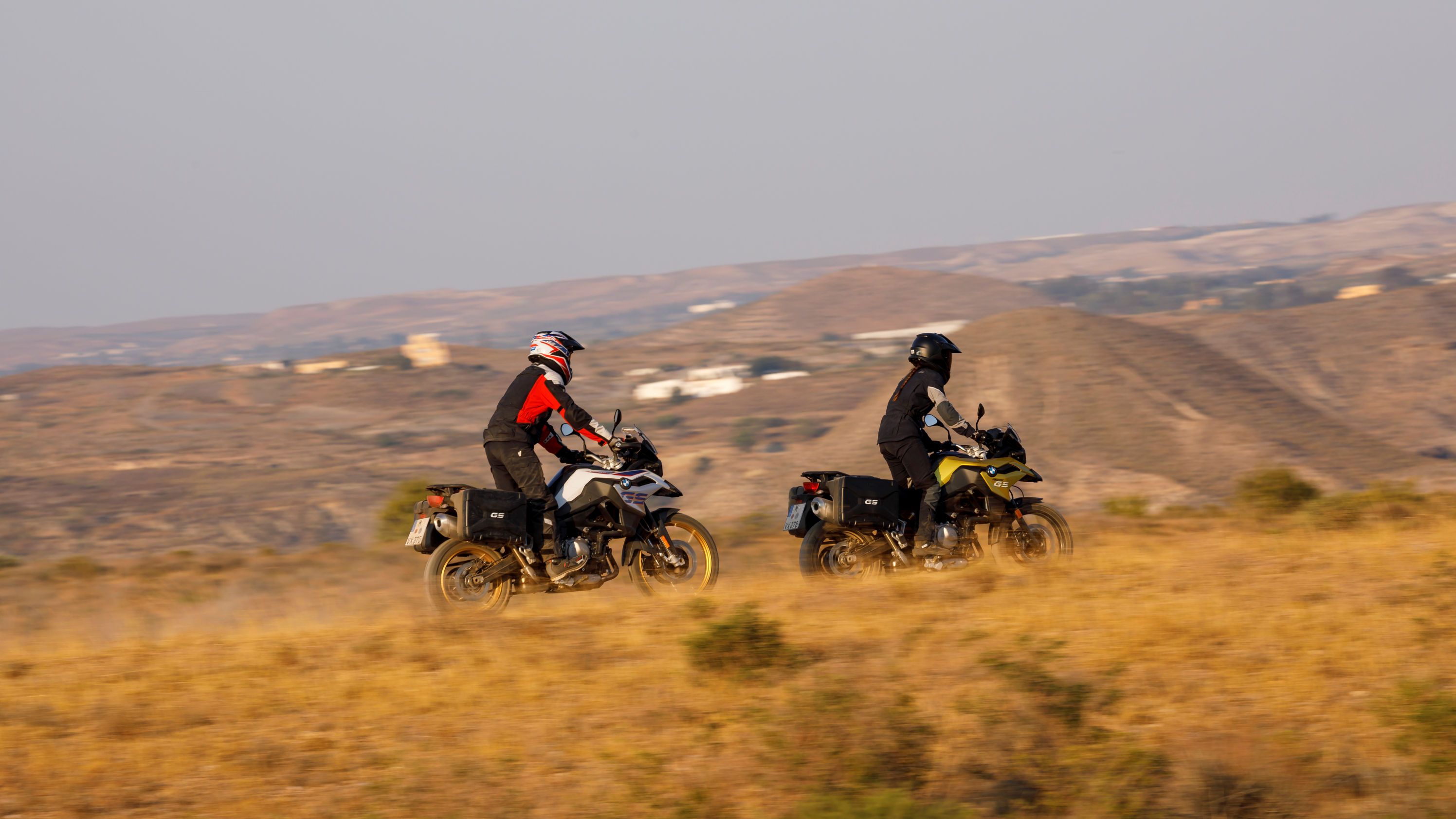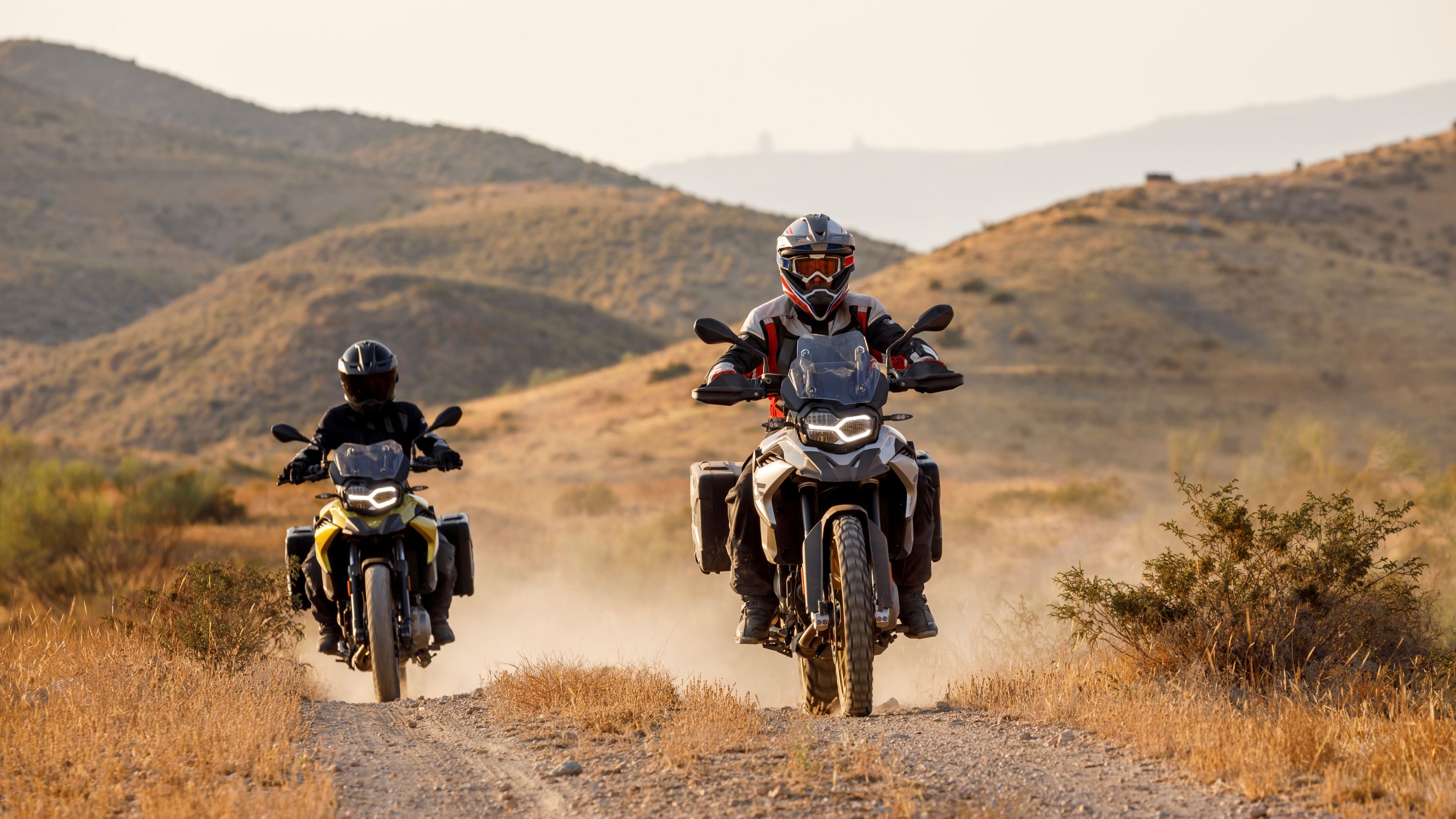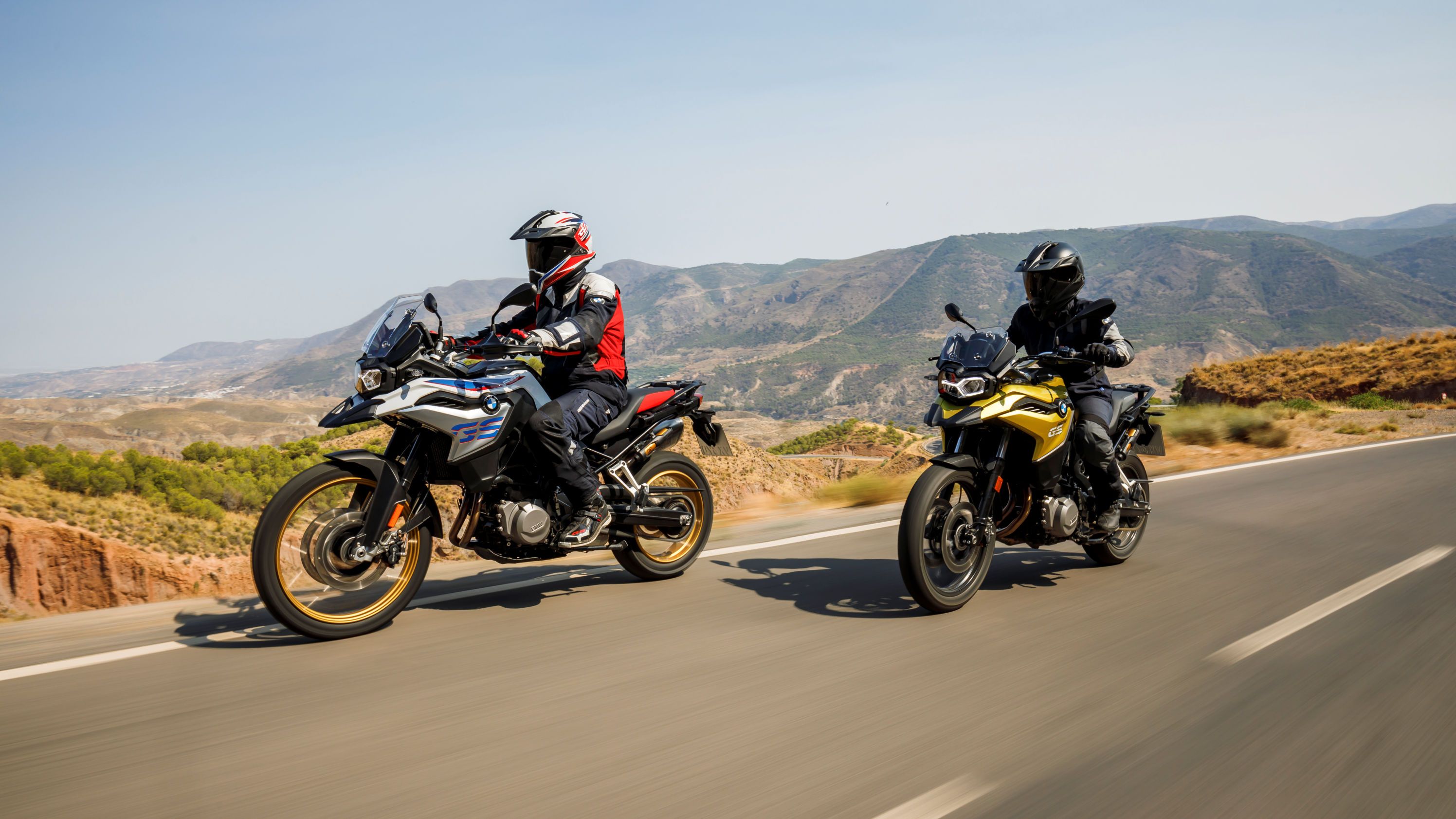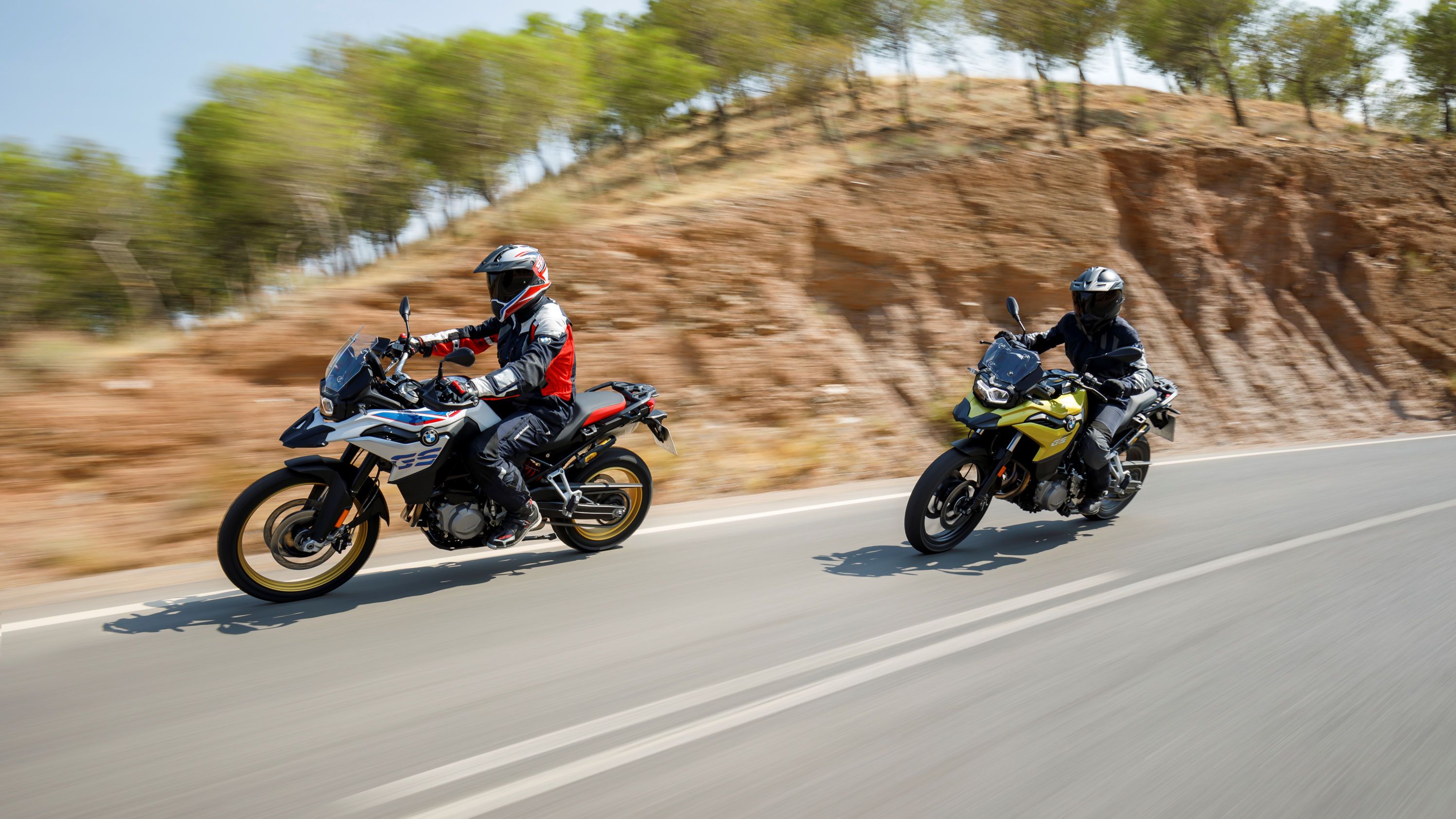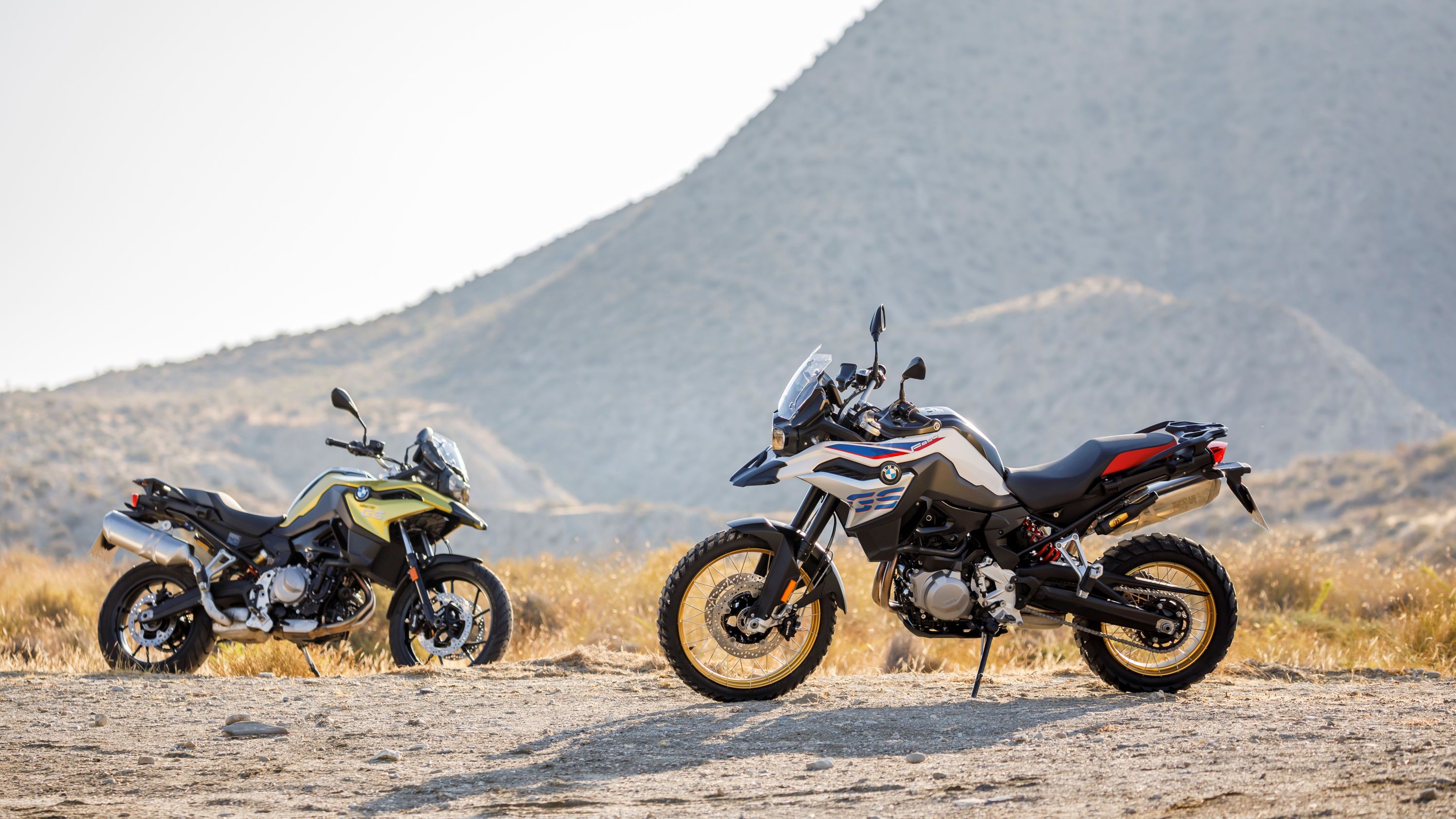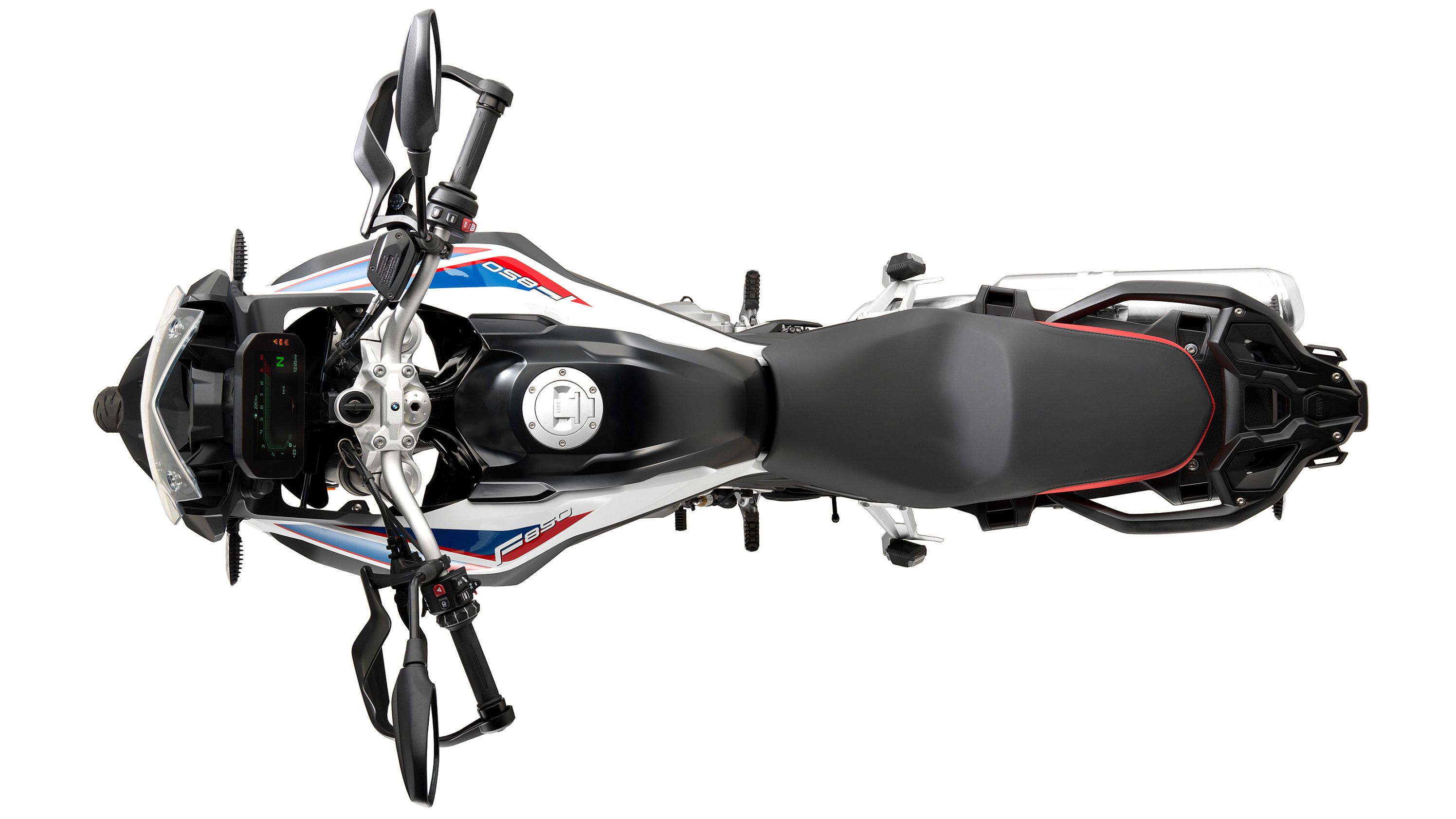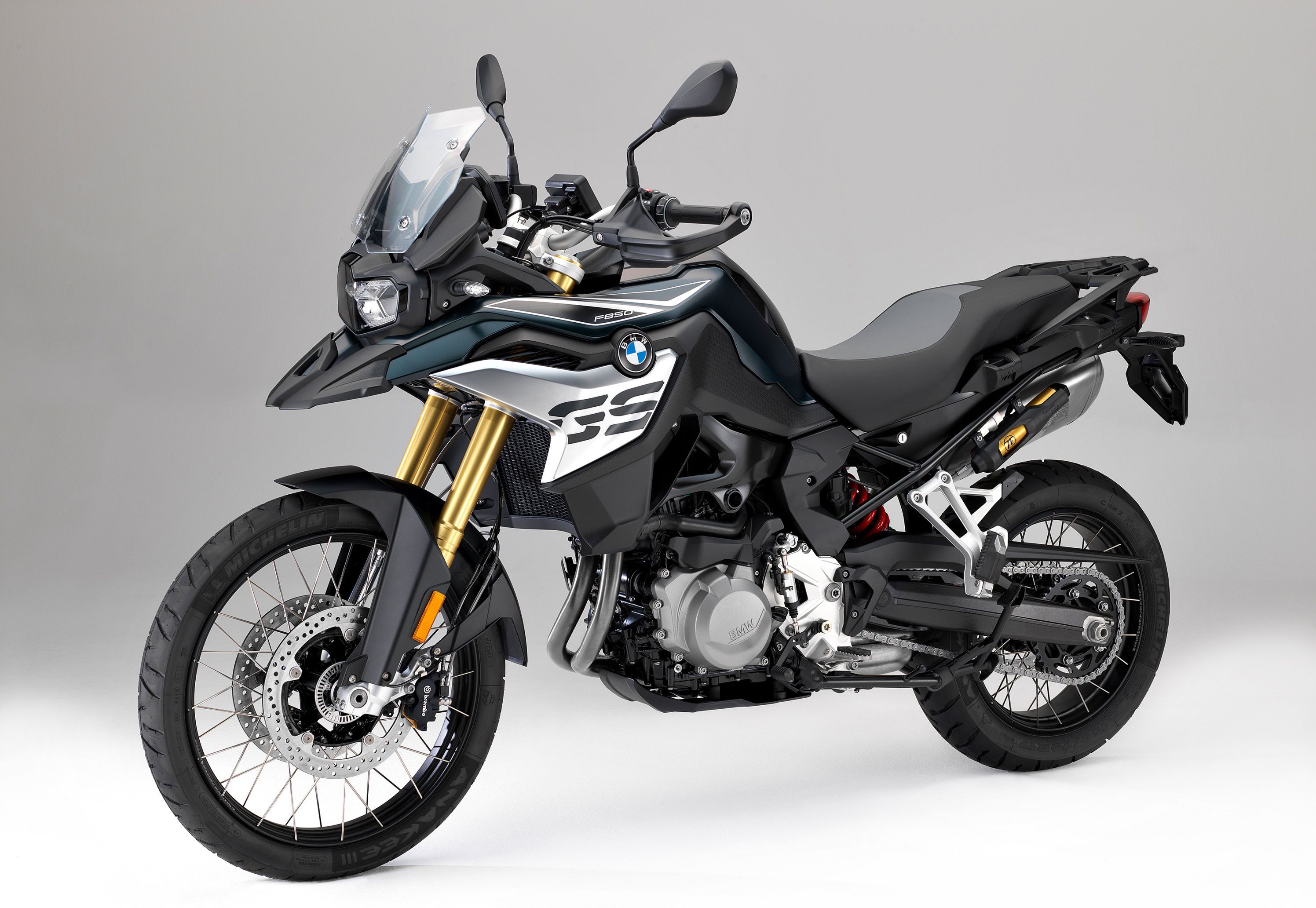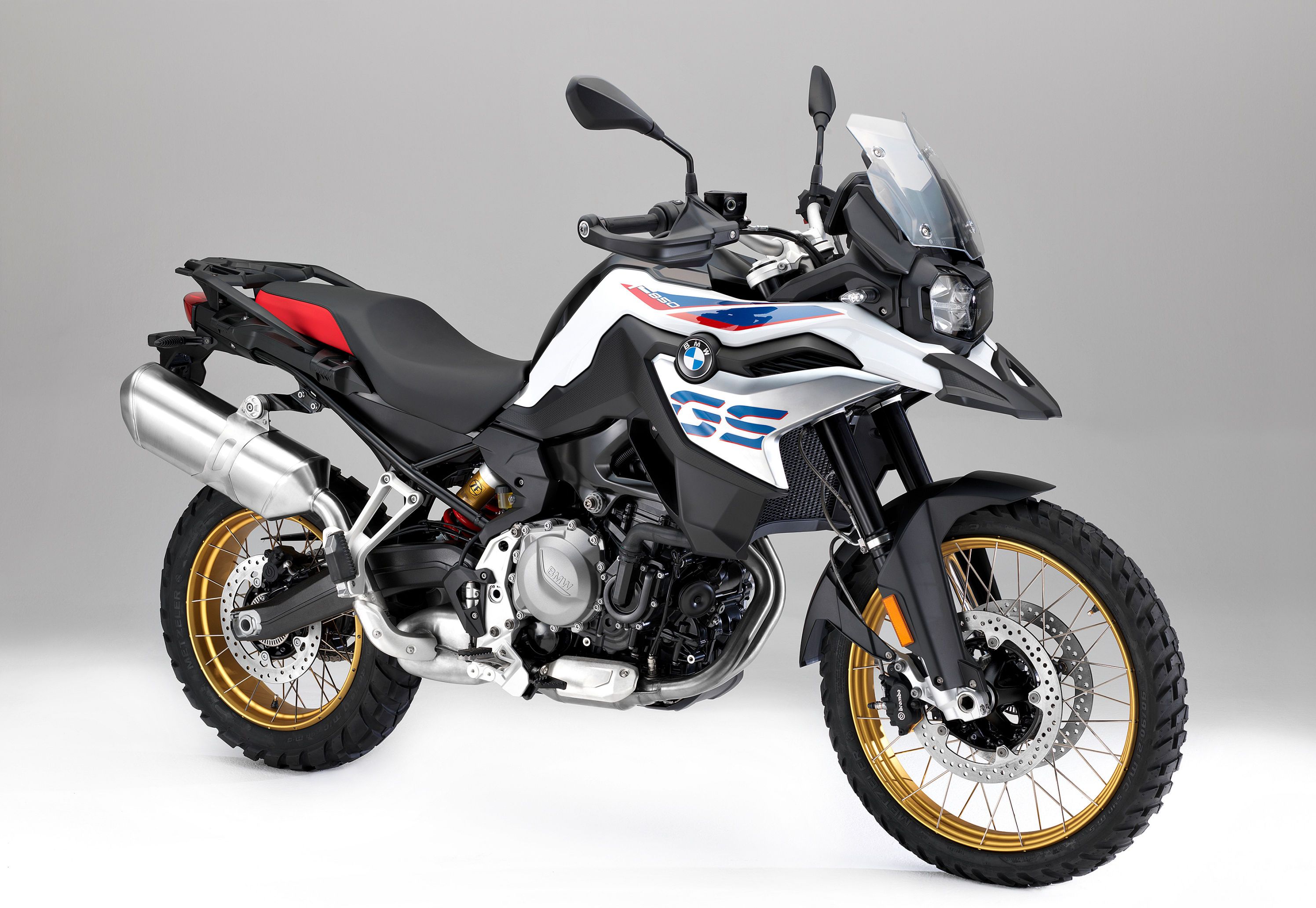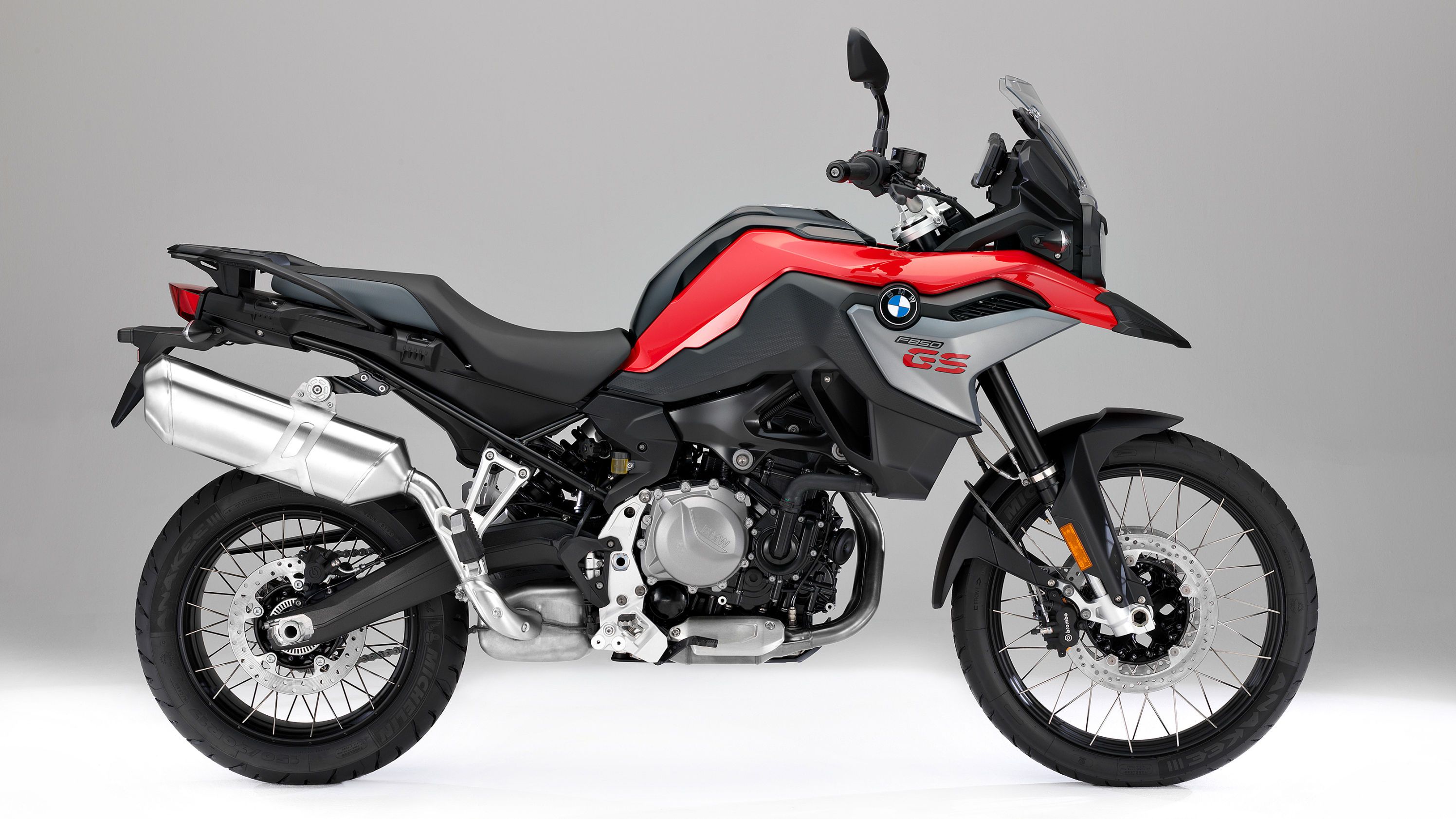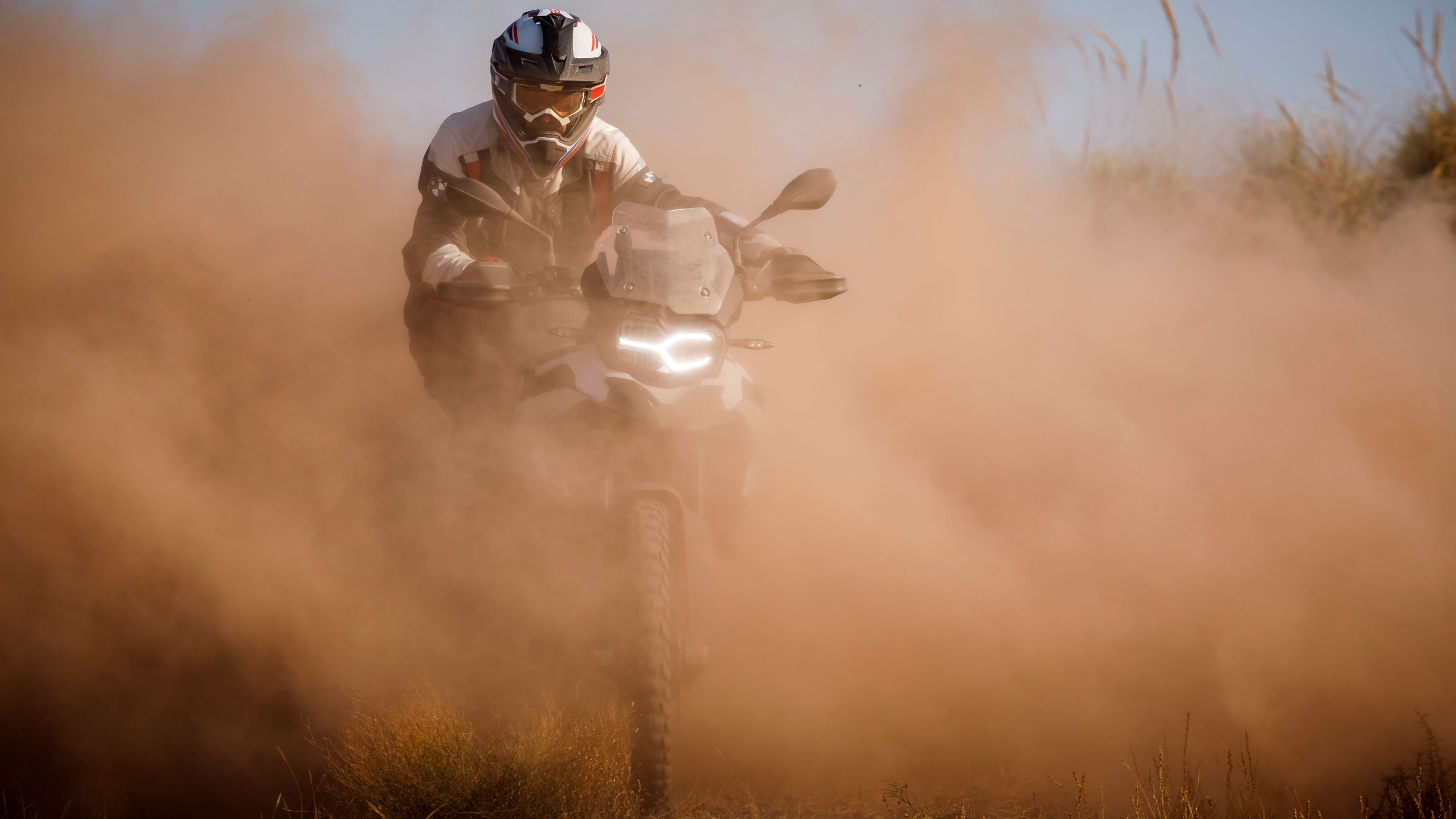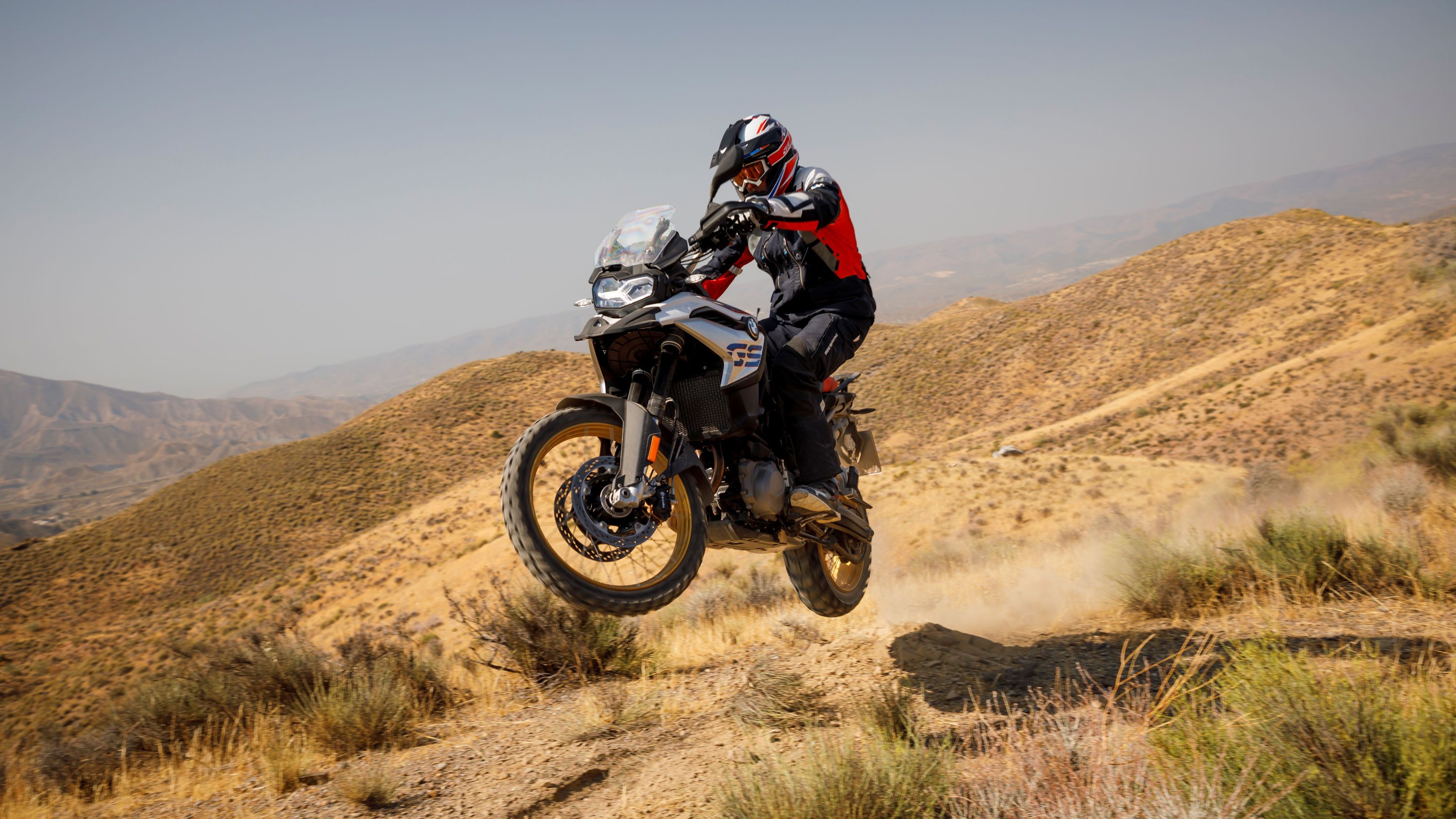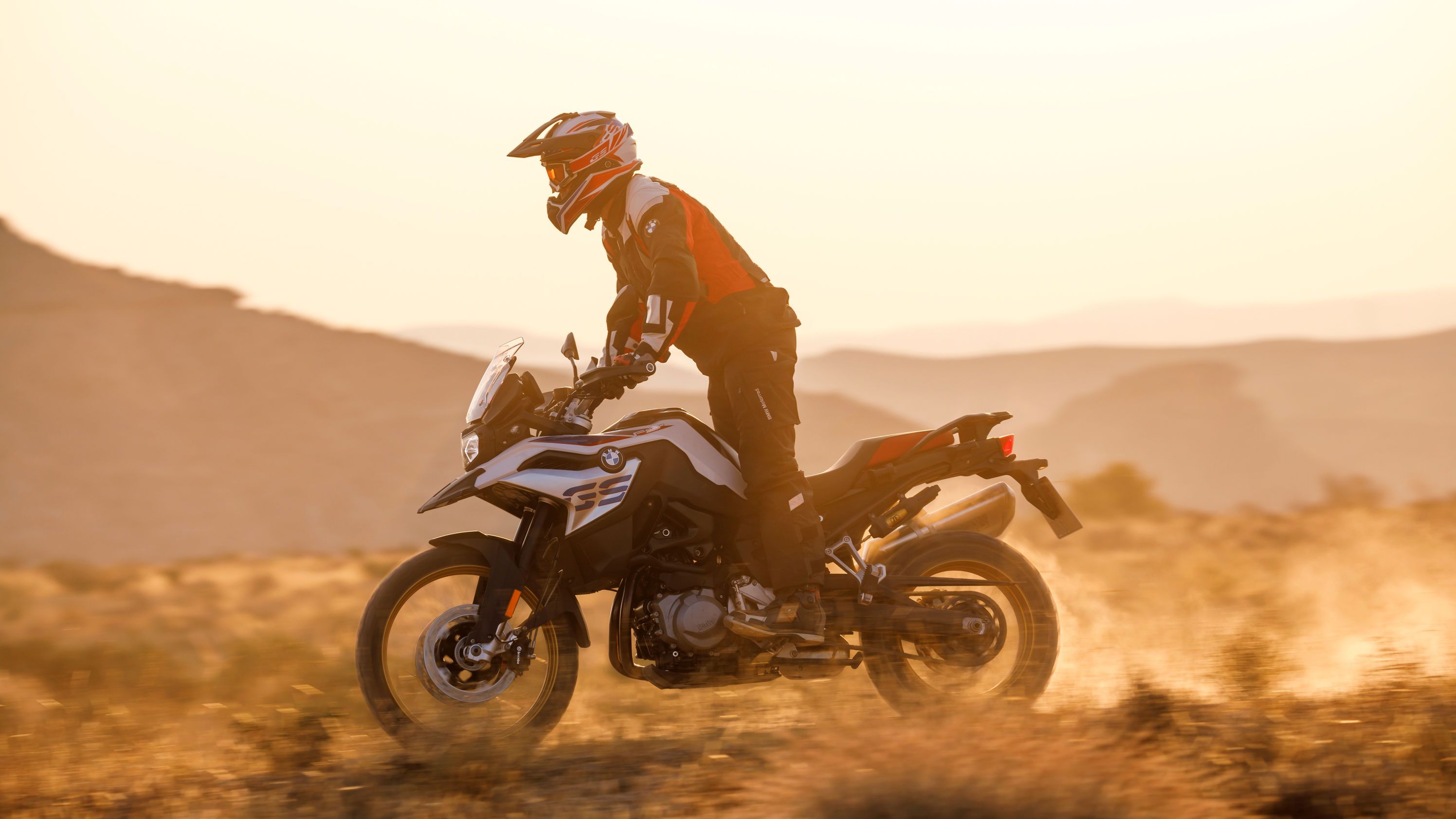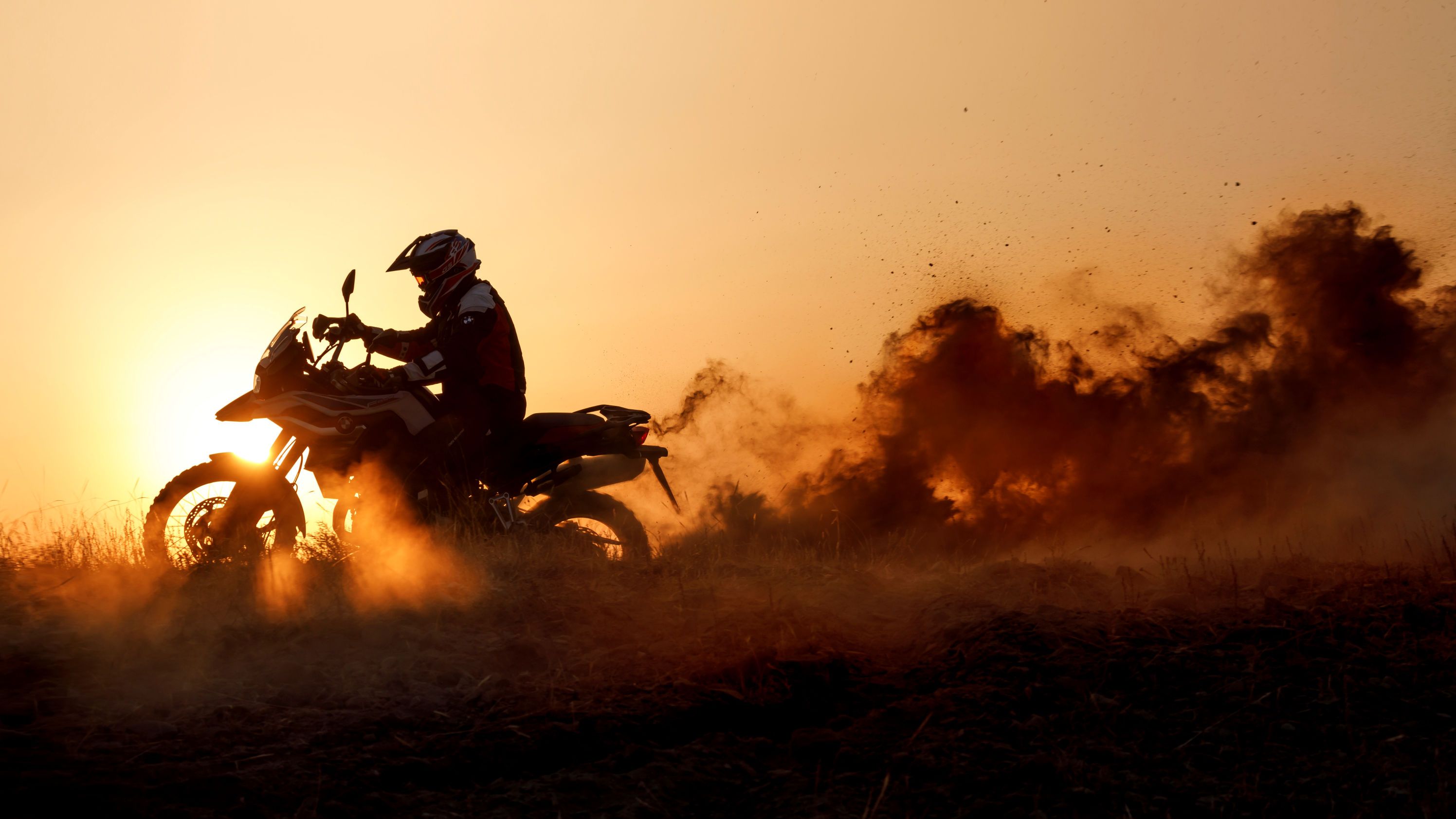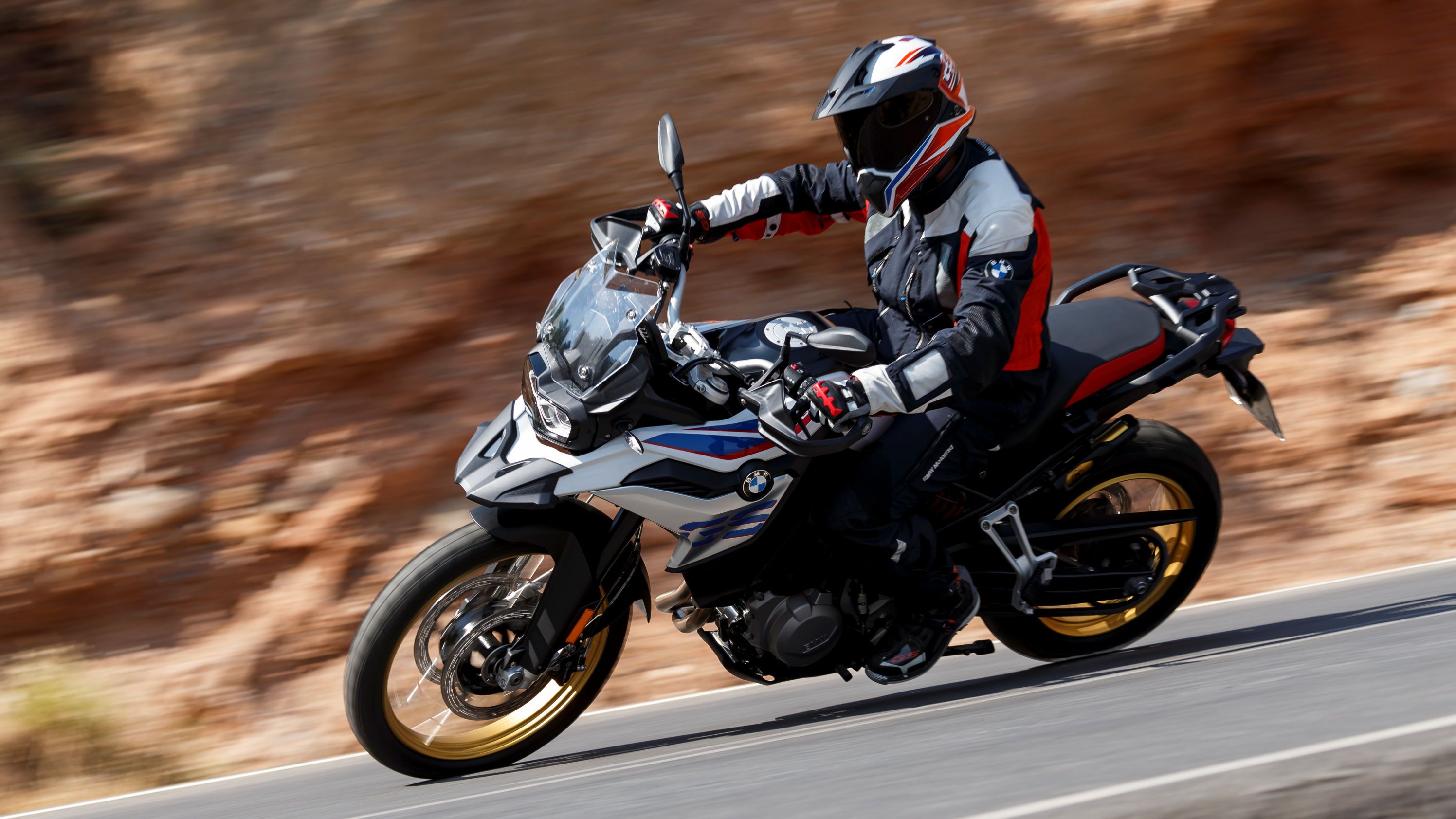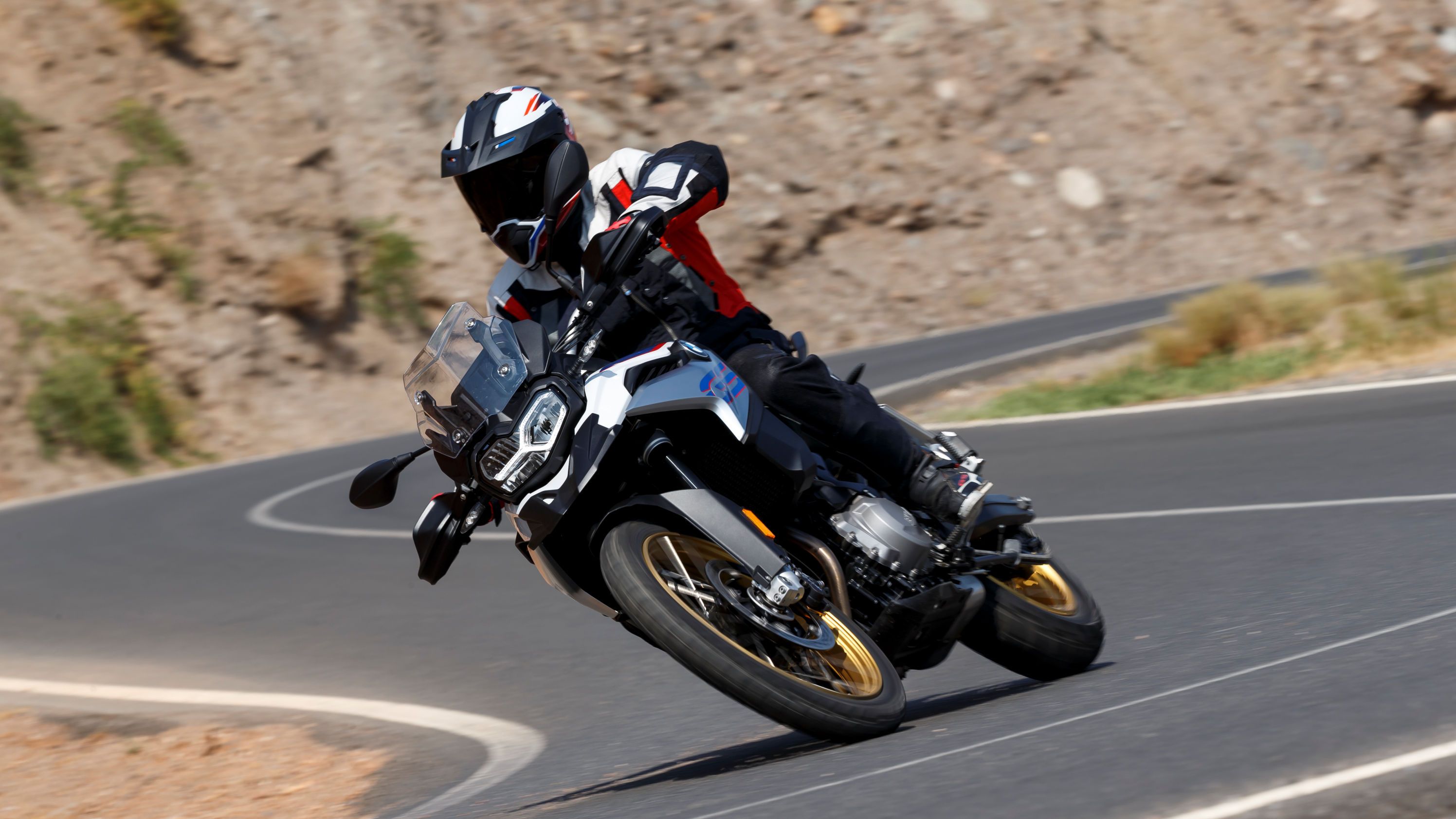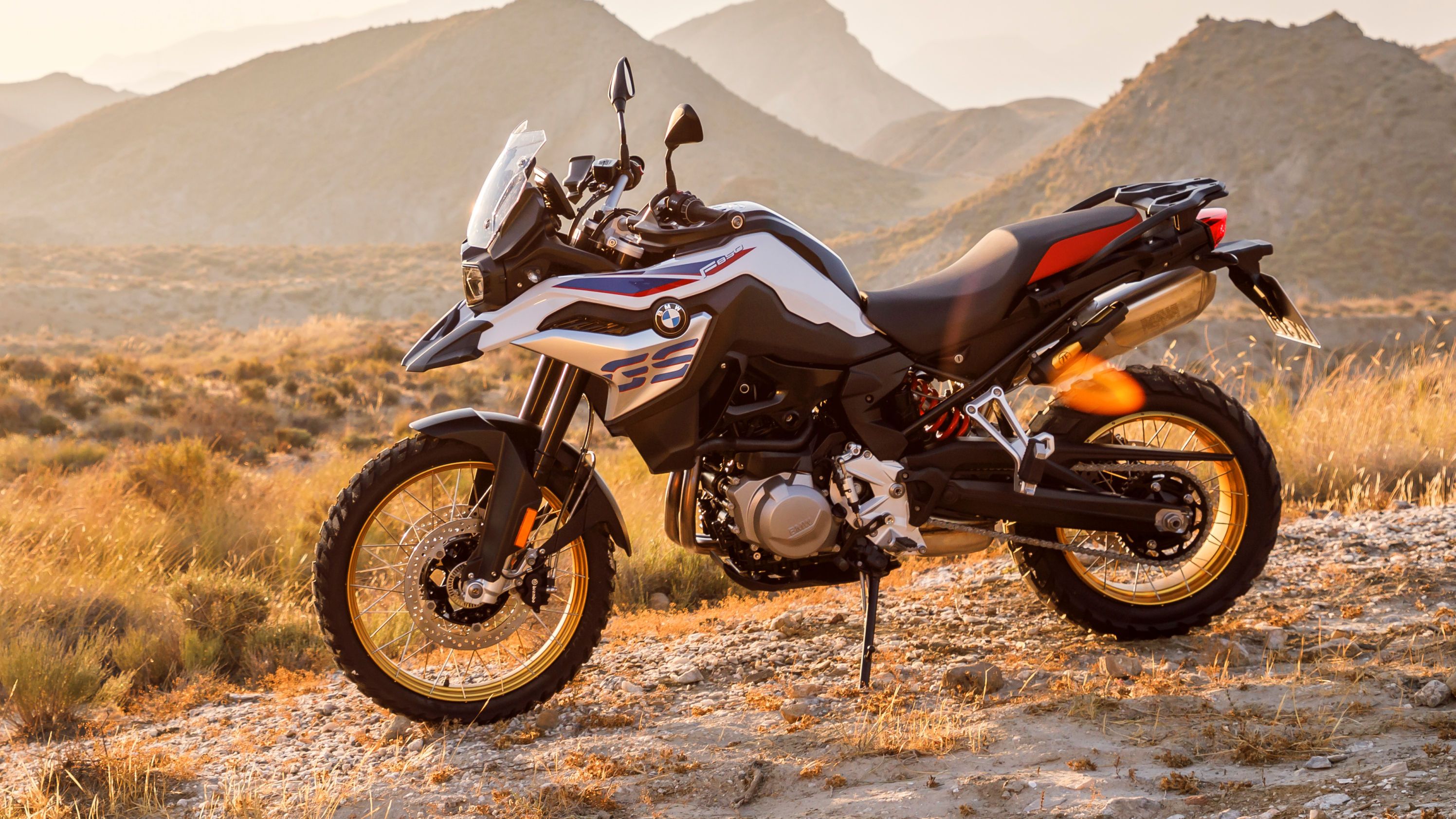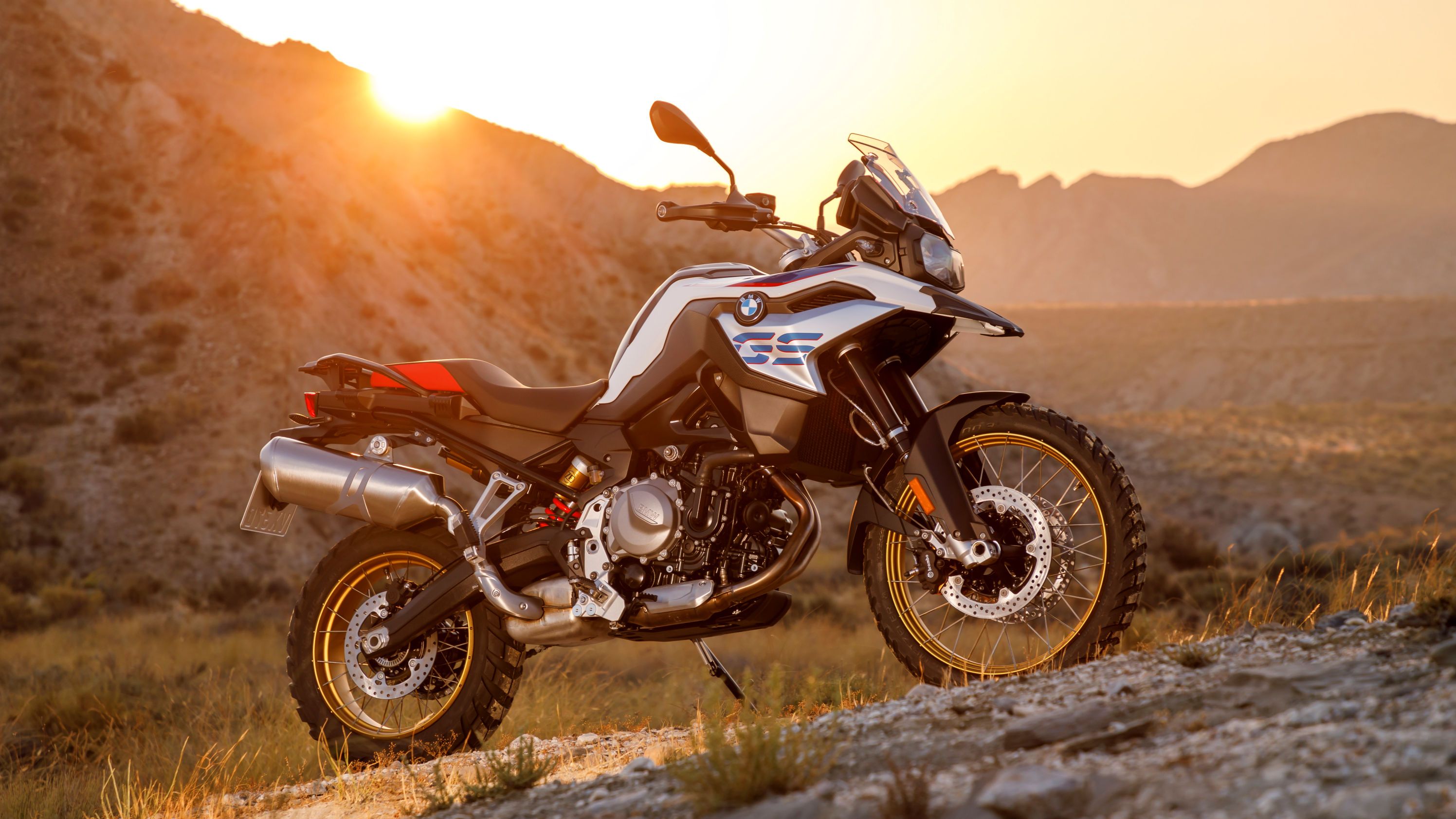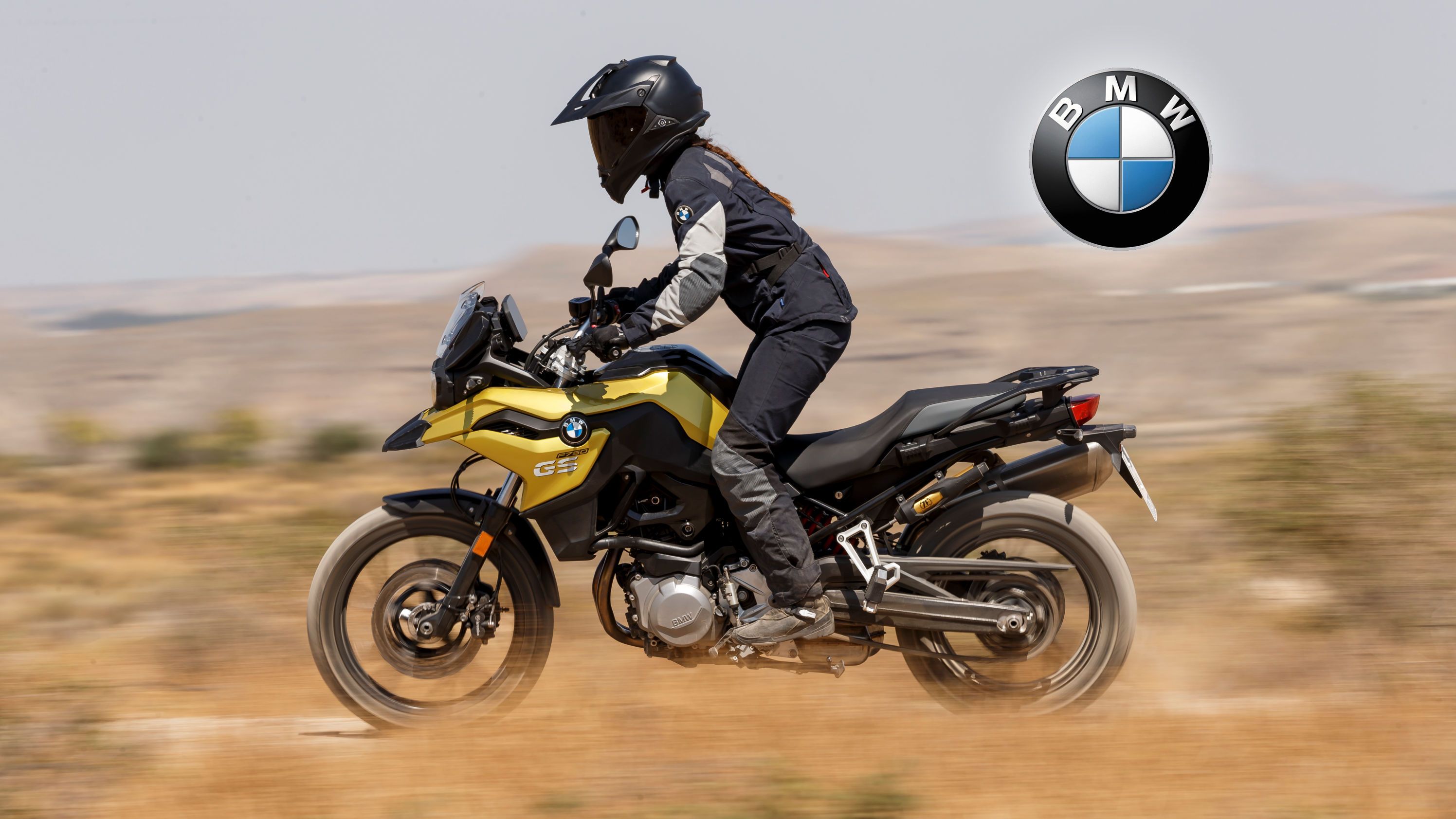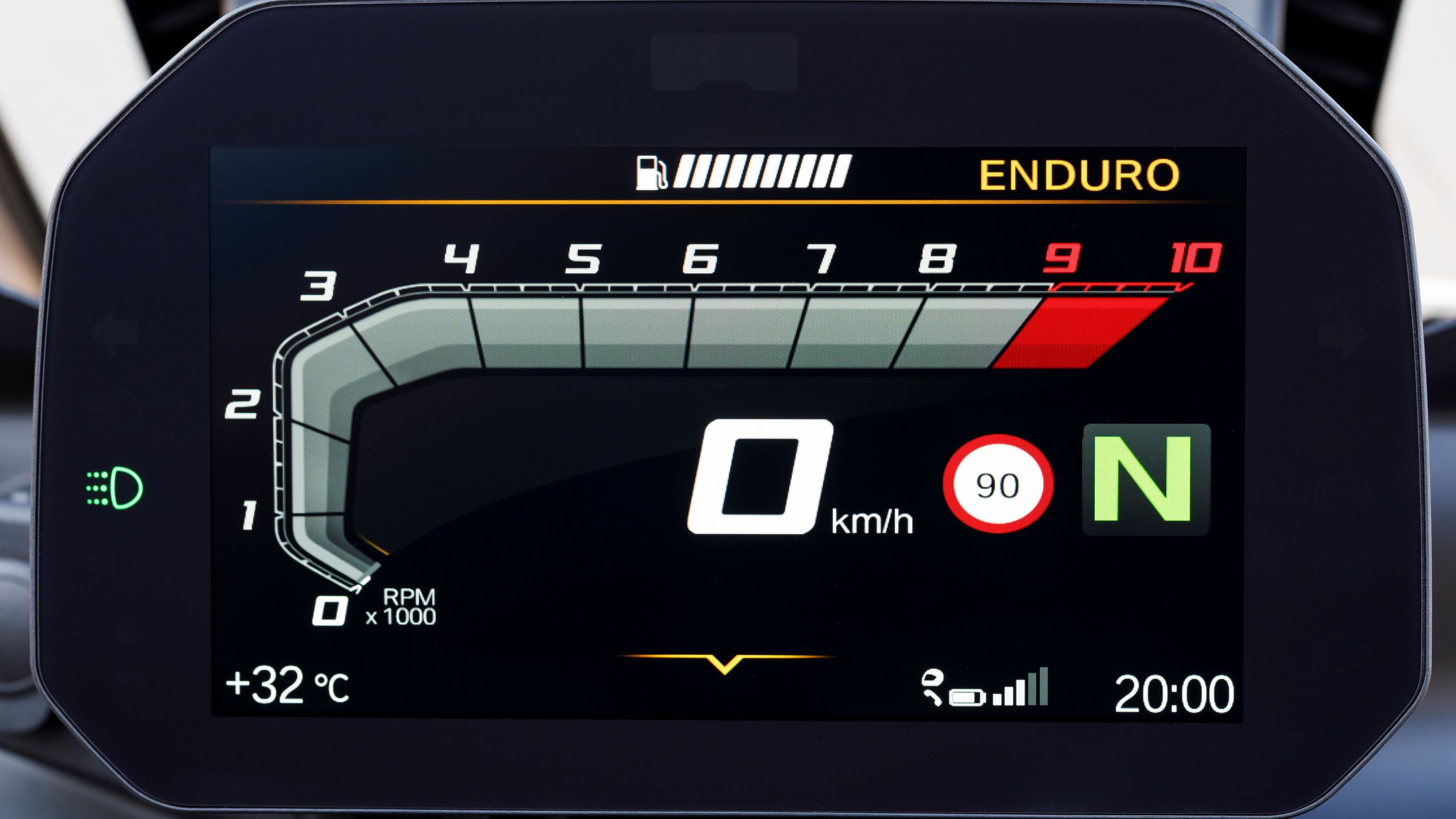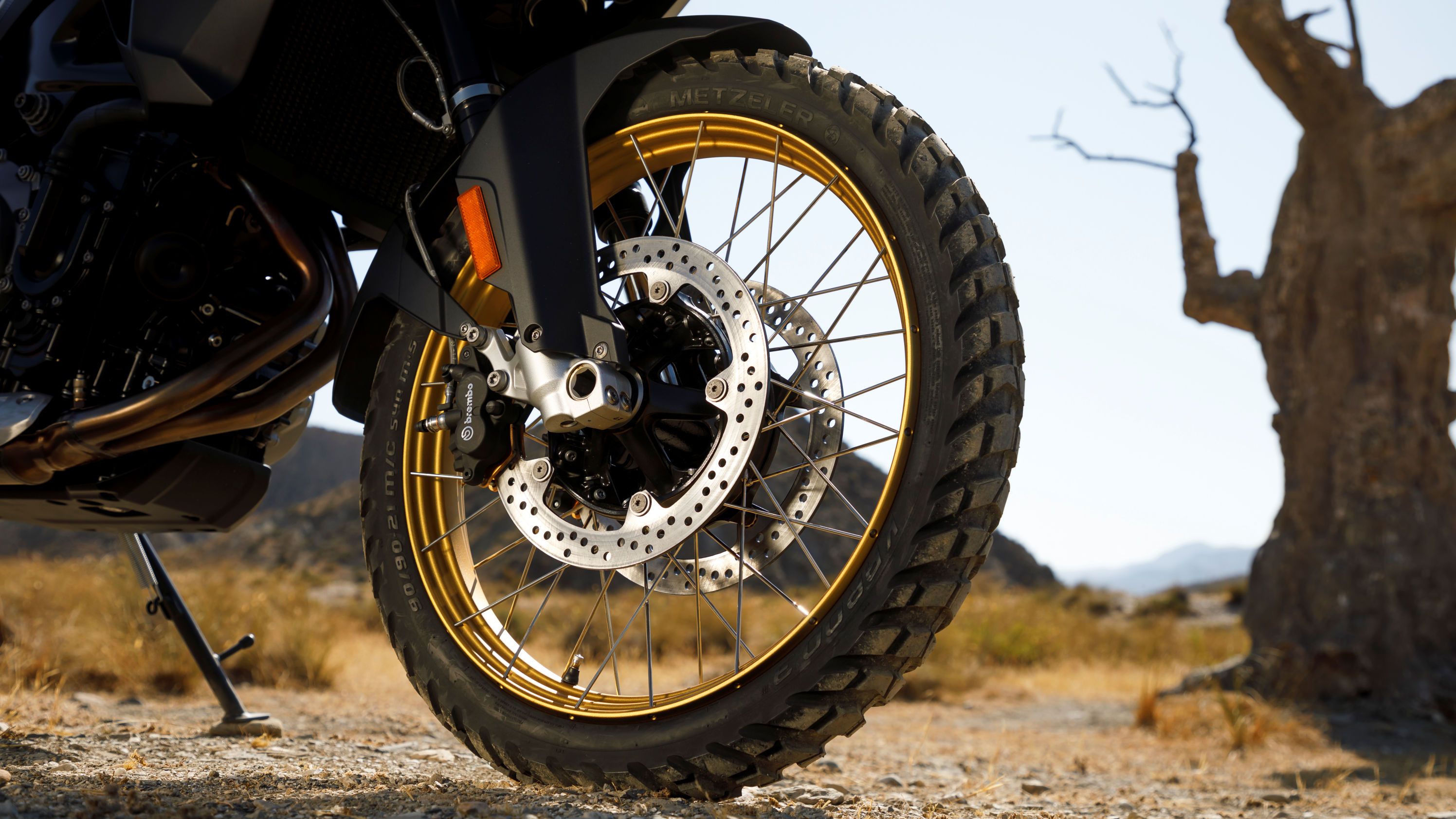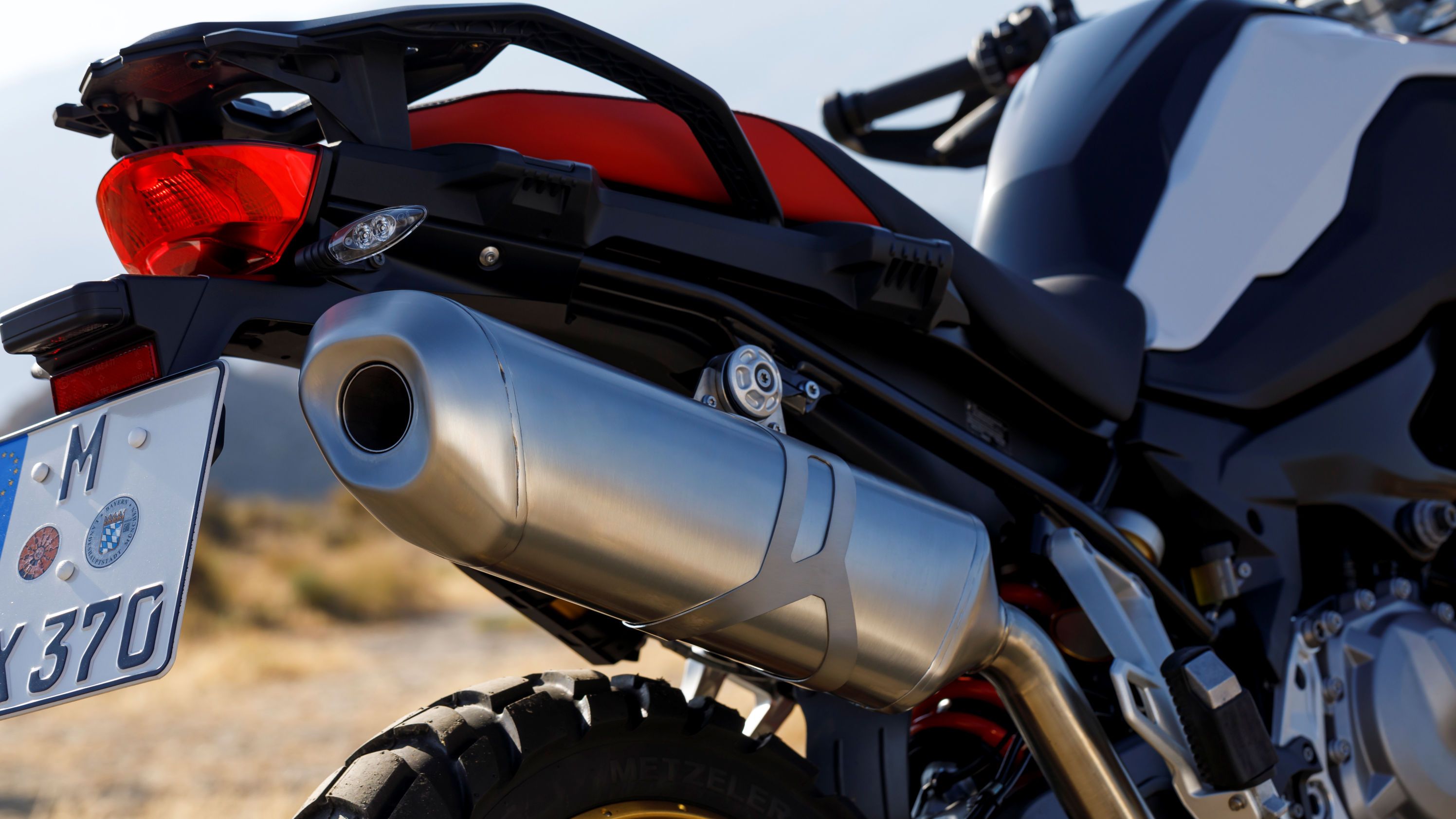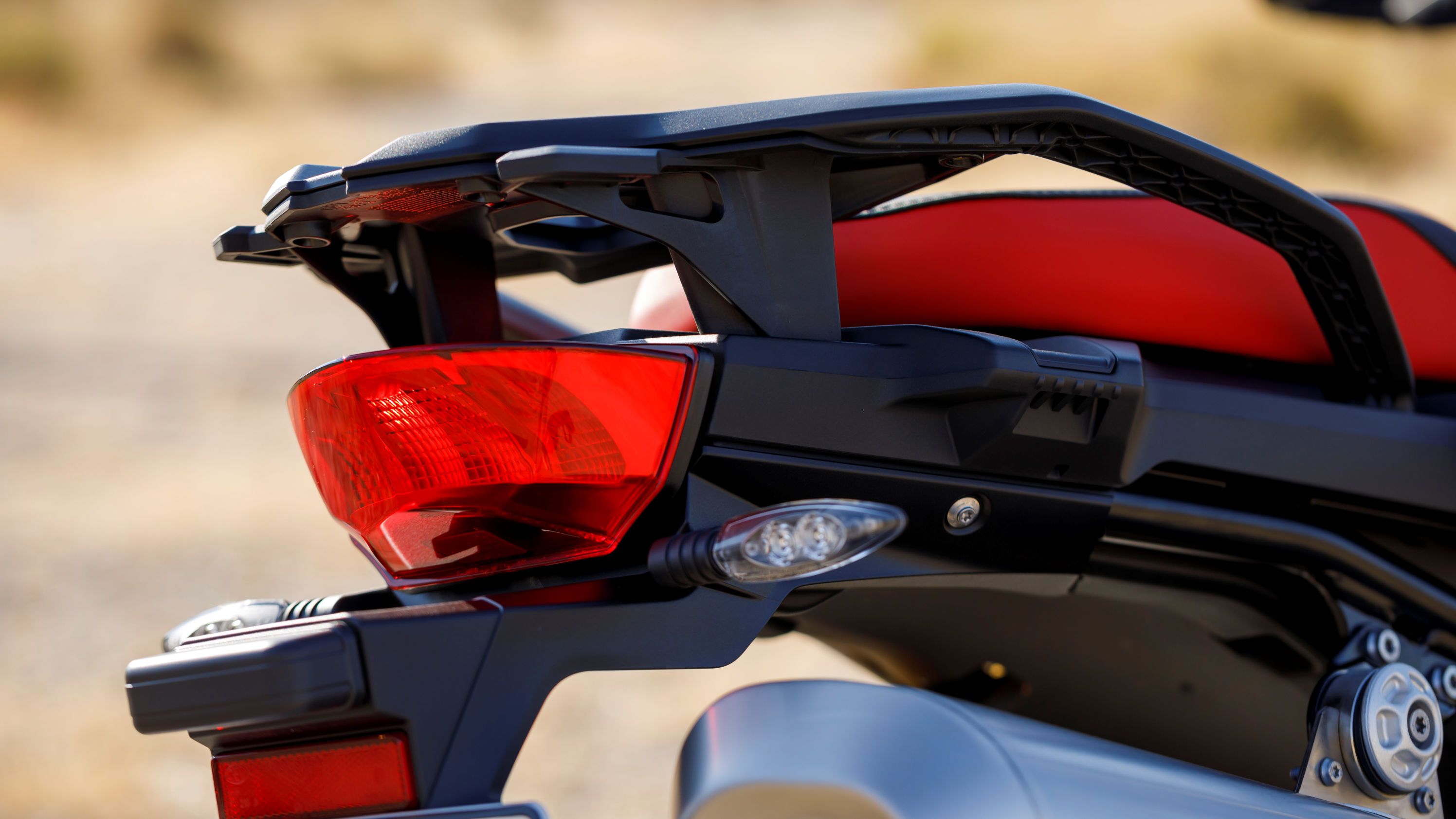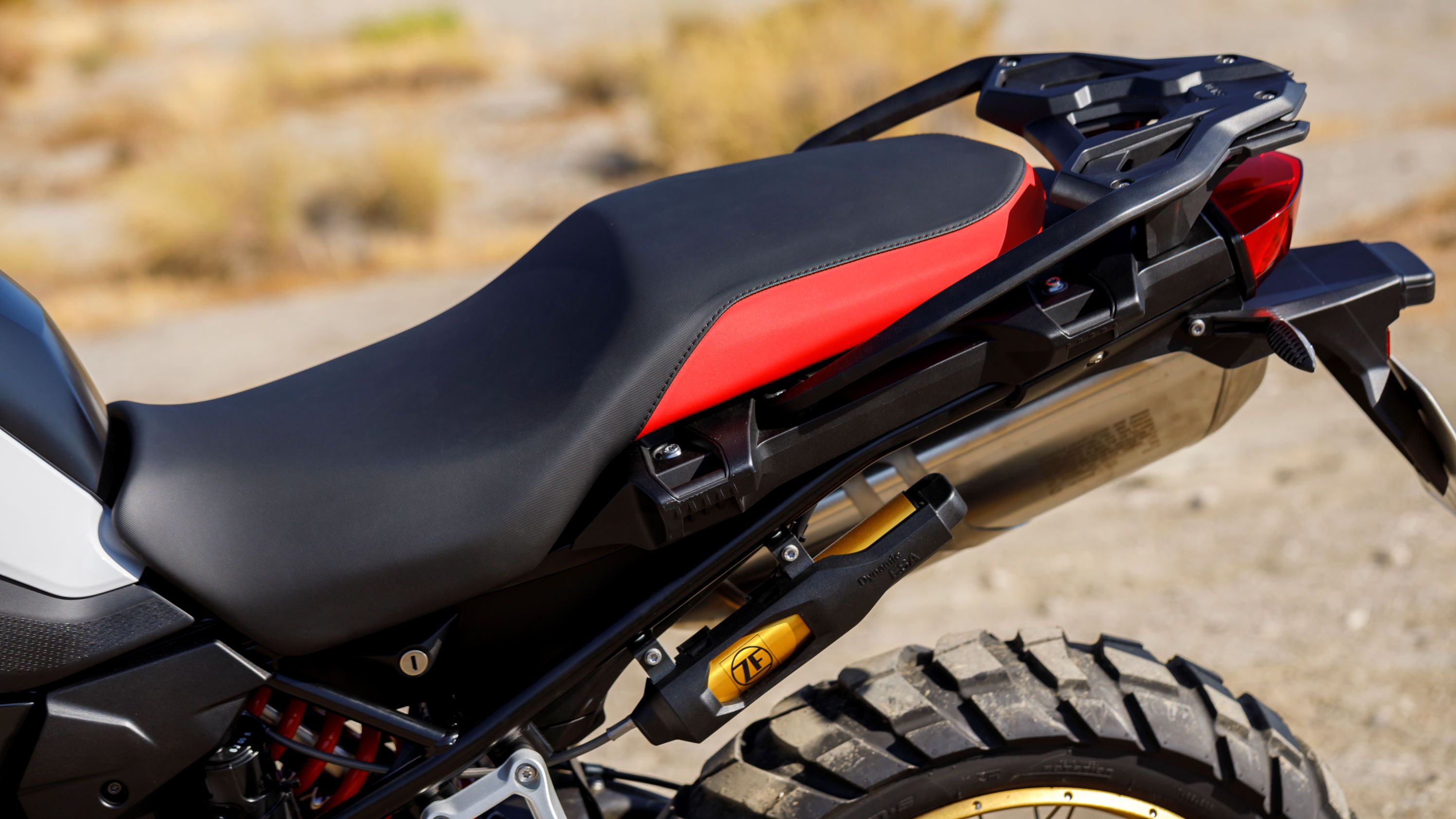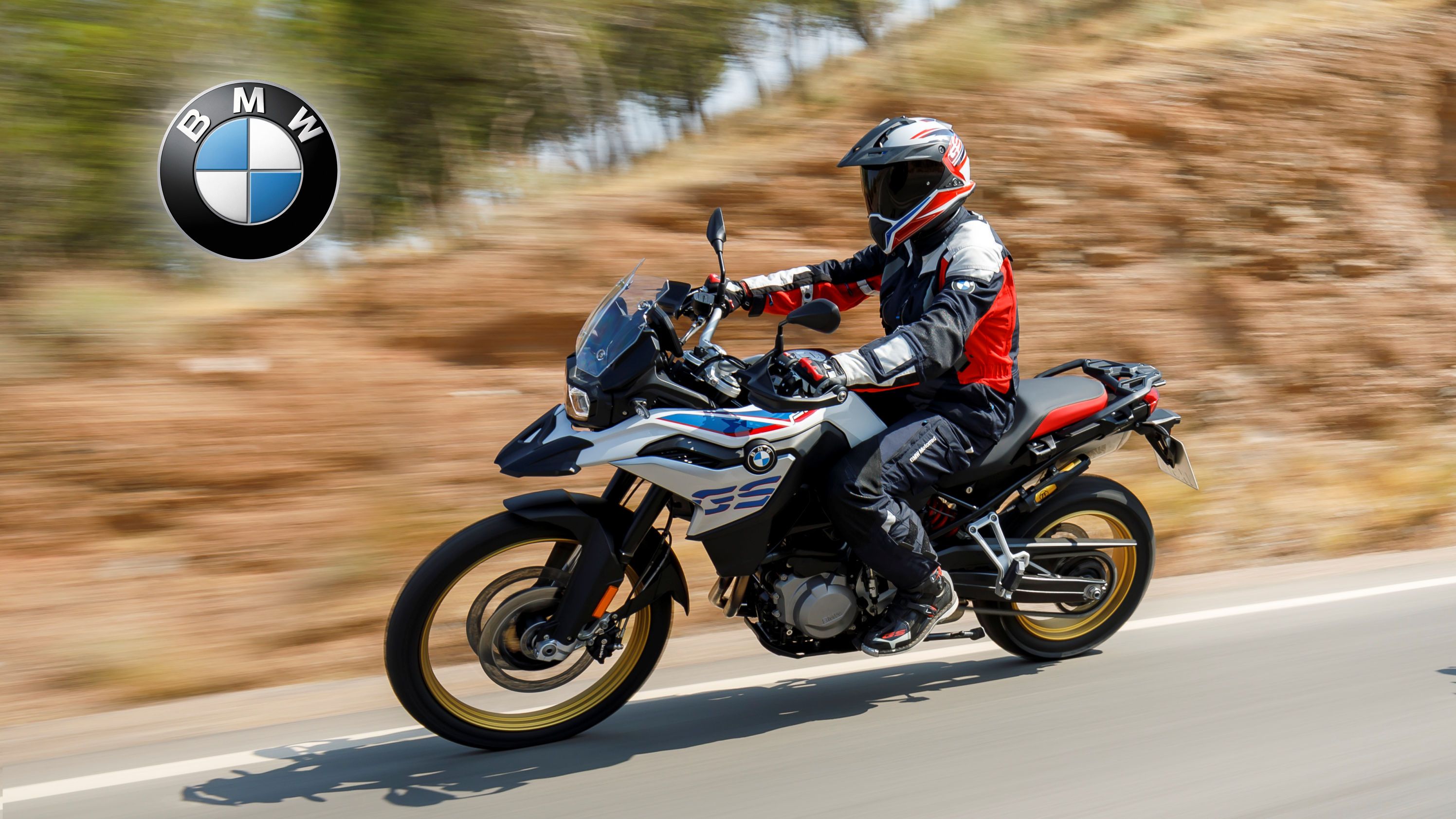BMW pressed on into adventure-bike territory with a new generation of F-GS models, the F 750 GS and F 850 GS. This adventuresome pair follows the same design as it predecessors with the 750 serving as a road tourer and the 850 set up for work in what you might call less-civilized areas, be it fire trails, dirt roads, or deserts. An all-new powerplant delivers up to 10-percent more horsepower than the previous gen, and each enjoys other features specifically geared to its host's purpose in life. The newly-redesigned frame and bodywork, in the words of the factory, give the range “a more dynamic and masculine design.” Wherever you land on the looks, form follows function on bikes like these (or at least it should) and so it's the rest of the machine that should matter the most. Let's dig in and check out the specialized gear and capabilities of these two new-in-2018 rides.
2018 - 2020 BMW F 750 GS / F 850 GS
- Make: Array
- Model: 2018 - 2020 BMW F 750 GS / F 850 GS
- Engine/Motor: Parallel-Twin
- [do not use] Vehicle Model: Array
BMW F 750 GS / F 850 GS Design
At a glance it's a little difficult to tell these two siblings apart. Both lead the way with a moderate bird's-beak fairing over a fullish front fender and a steampunk-esque, asymmetrical LED headlight arrangement that I gotta' say I really like.
Up top, a small windshield deflects the air away from the rider's torso with a vented design that helps the air re-integrate smoothly with the slipstream to reduce the head-buffet effect for low-fatigue highway speeds. The fairing and fuel tank design do most of the work steering the F-GS range into the men's department with a skosh more chunkiness and a tad less swoopiness, but I can't decide if that makes it more manly, or just more German.
A tiered saddle replaces last year's bench seat, and it brings a very definite and well-defined break between pilot and pillion with enough rise to give your passenger a chance to see something other than the back of your head. JC handles and flip-up, subframe-mount footpegs provide support for contact points one through four, and they complete the stock passenger-comfort package.
At the terminus of the subframe, a rather blocky taillight and pair of LED turn signals take care of the rearward lighting with an interesting function as one of the available options. The dynamic brake light feature flashes when brakes are applied at speeds above around 30 mph, and once you decelerate below the threshold, the hazard lights kick in to make you are as visible as possible to the traffic behind you. Pretty cool, but too bad it isn't part of the standard equipment package. The rest of rearward equipment comes in the form of a hangy-downy mudflap/plateholder combo. At the end of the day, I'm not sure how masculine this pair really is, but they certainly look they are built for serious business.
BMW F 750 GS / F 850 GS Chassis
The factory reimagined the bones for this latest generation of F-GS and went with a “deep-drawn steel bridge frame” that forms a monocoque structure with the engine as a stressed member. Special attention was paid to keeping the assembly strong, nimble and precise, and each comes with its own setup. At 27 degrees, the rake of the 750 is one degree farther out than the previous gen with 4.11 inches of trail that is over 1/4-inch longer than last year as well. The 850 pushes it out another notch with 28 degrees of rake and 4.96 inches of trail.
Considering their different missions in life, it should come as no surprise that we start to see some divergence in hardware selection at this point. Both run a yoke-style aluminum swingarm, but where the streetwise 750 comes with 6.96 inches of travel and adjustable preload/rebound damping, the 850 boasts 8.6 inches of travel with the same comfort tweaks. Up front, the 750 rides on a pair of 41 mm inverted stems that give up 5.94 inches of travel versus the 43 mm usd forks and 8.03 inches of travel with the 850. Again with the optional equipment, the factory offer a Dynamic Electronic Suspension Adjustment feature that keeps the rear suspension automatically tweaked for varying riding conditions.
The siblings come back together at the brakes with a pair of 305 mm discs up front and a 265 mm disc out back and BMW Motorrad ABS on overwatch. You can switch the standard ABS off if you like, or go for the ABS Pro option that provides corner-sensitive ABS intervention.
|
Model: |
F 750 GS |
F 850 GS |
|
Frame: |
Bridge-type frame, steel shell construction |
Bridge-type frame, steel shell construction |
|
Front wheel location / suspension: |
Telescopic fork, Ø 41 mm |
Upside-down telescopic fork, Ø 43 mm |
|
Rear wheel location / suspension: |
Cast aluminum dual swing arm, central spring strut, spring pre-load hydraulically adjustable, rebound damping adjustable |
Cast aluminum dual swing arm, central WAD spring strut, spring pre-load hydraulically adjustable, rebound damping adjustable |
|
Suspension travel front / rear: |
5.9 inches / 7 inches (OE: suspension lowering kit 5.2 inches / 6.2 inches) |
8 inches / 8.6 inches (OE: suspension lowering kit 7.2 inches / 7.8 inches) |
|
Wheelbase: |
61.4 inches |
62.7 inches |
|
Castor: |
4.1 inches |
5 inches |
|
Steering head angle: |
63° |
62° |
|
Wheels: |
Cast aluminum wheels |
Cross spoke wheels |
|
Rim, front: |
2,50 x 19" |
2,15 x 21" |
|
Rim, rear: |
4,25 x 17" |
4,25 x 17" |
|
Tires, front: |
110/80 R19 |
90/90 21 |
|
Tires, rear: |
150/70 R17 |
150/70 R17 |
|
Brake, front: |
Dual disc brake, floating brake discs, Ø 305 mm, double-piston floating caliper |
Dual disc brake, floating brake discs, Ø 305 mm, double-piston floating caliper |
|
Brake, rear: |
Single disc brake, Ø 265 mm, single-piston floating caliper |
Single disc brake, Ø 265 mm, single-piston floating caliper |
|
ABS: |
BMW Motorrad ABS (disengageable) |
BMW Motorrad ABS (disengageable) |
BMW F 750 GS / F 850 GS Drivetrain
An all-new beating heart drives the range. A parallel-twin, the engine runs with a 90-degree offset in the con-rod throws and a 270/450-degree firing order. Sure, that introduces some extra vibration, but the factory included a set of counterbalancers that take the edge off. That offset also lends the engine a bit of a lope that is pleasing to the ear.
The 84 mm bore and 77 mm stroke adds up to a total of 853 cc with a sizzlin' hot, 12.7-to-1 compression that calls for the premium road champagne. While it's the same base engine in both, the 850 cranks out 67.8 pound-feet at 6,000 rpm and 95 horsepower at 7,500 rpm but the 750 is a skosh tamer with only 61.2 pounds o' grunt and 77 ponies.
A chain-driven DOHC valvetrain times the four valves in each head with 27.2 mm exhaust poppets and 33.5 mm intakes to maximize volumetric efficiency, well, for a naturally-aspirated engine anyway. Both come with Beemer's riding modes feature that automatically coordinates the throttle response, level of ABS intervention and ASC settings with a push of a button with two modes, “rain” and “road,” plus a couple more modes that can be had with the optional Riding Modes Pro package.
Even though it vastly complicates the electronics, I like the Modes; it turns the machine into a Swiss Army bike capable of a wide range of missions. A six-speed transmixxer and slipper clutch manages the power post-engine with an O-ring chain for a final drive.
|
Model: |
F 750 GS |
F 850 GS |
|
F 750 GS |
Water-cooled 4-stroke in-line two-cylinder engine, four valves per cylinder, two overhead camshafts, dry sump lubrication |
Water-cooled 4-stroke in-line two-cylinder engine, four valves per cylinder, two overhead camshafts, dry sump lubrication |
|
F 850 GS |
84 mm x 77 mm |
84 mm x 77 mm |
|
Engine: |
853 cc |
853 cc |
|
Bore x stroke: |
77 hp at 7,500 rpm, OE output reduction to 48 hp at 6,500 rpm |
95 hp at 8,250 rpm, OE output reduction 48 hp at 6,500 rpm, OE RON91 unleaded regular fuel: 90 hp at 8,000 rpm |
|
Displacement: |
61 lb-ft at 6,000 rpm, OE output reduction: 46.5 lb-ft at 4,500 rpm |
67.9 lb-ft at 6,250 rpm, OE output reduction: 46.5 lb-ft at 4,500 rpm, OE RON91 unleaded regular fuel: 63.4 lb-ft at 6,250 rpm |
|
Rated output: |
12.7 : 1 |
12.7 : 1 |
|
Max. torque: |
Electronic injection |
Electronic injection |
|
Compression ratio: |
Closed-loop 3-way catalytic converter, emission standard EU-4 |
Closed-loop 3-way catalytic converter, emission standard EU-4 |
|
Mixture control / engine management: |
Multiple-disc wet clutch (anti hopping), mechanically operated |
Multiple-disc wet clutch (anti hopping), mechanically operated |
|
Emission standard: |
Constant mesh 6-speed gearbox integrated in crankcase |
Constant mesh 6-speed gearbox integrated in crankcase |
|
Clutch: |
Endless O-ring chain with shock damping in rear wheel hub |
Endless O-ring chain with shock damping in rear wheel hub |
BMW F 750 GS / F 850 GS Pricing
The 2021 F 750 GS rolls for $10,995 and the 850 for $13,545. Each comes in a special-livery 40-years anniversary model for $11,395 and $13,945, respectively.
BMW F 750 GS / F 850 GS Competitors
Triumph Tiger 800 XR
When looking at the these, I reckon Triumph's Tiger 800 XR will appeal to the same sort of buyer, and be a good-enough competitor for the F 750 GS. The Tiger is slightly leaner on the bodywork, and it shuns the bird's beak in favor of a blunt entry that leads the way with a naked-style headlight arrangement and small windscreen.
Moving aft, the fuel-tank hump is less pronounced on the Tiger, which is almost enough to veer it into more of a modern-standard look than an adventure bike proper. Further back, the two competitors are very similar at a glance, but Beemer alone has the nifty flashing brake light. (FYI; you can get an equivalent device through the aftermarket. Just sayin'...)
Trumpet runs a set of 43 mm usd forks, a bit fatter than Beemer's 41 mm stems, but they come non-adjustable, and the rear shock comes only with adjustable preload, so Beemer comes out ahead here. Brakes are close enough for government work with switchable ABS protection across the board and no advantage to either party as long as you stay out of the optional equipment.
Unlike the 750 with its twin-cylinder lump, the Tiger runs a triple that measures out at 800 cc and falls a tad shy in displacement. What it lacks in size it makes up on the dyno with a claimed 94 horsepower and 58 pound-feet of torque, a bit more than the Beemer brings to the table. Electronics are somewhat comparable with TC on the Tiger, but it can't hold up against the options Beemer has stashed. However, the XR has bigger (read: more expensive) siblings who have more in the way of fandanglery, but we aren't comparing them here.
Read our full review of the Triumph Tiger 800 XR.
He Said
“So far I'm digging the 750/850 pair. In the end, I'm definitely feeling the redesign. The aesthetics are better, ergos seem better and it has more of a serious business air about it than the 700/800 range.”
She Said
My wife and fellow motorcycle writer, Allyn Hinton, says, “It's hard to get a beat on these two. My biggest question right now is, how does moving the fuel tank back up top -- thus changing the center of gravity -- affect handling, especially off-road? That was one thing I commented about on the 700 was the low center of gravity. Speaking of the 700, it was quite easy to handle and the suspension was very forgiving. The new 750 and 850 are supposed to be even more capable, and I look forward to checking them out.”
BMW F 750 GS / F 850 GS Specifications
|
Model: |
F 750 GS |
F 850 GS |
|
F 750 GS |
||
|
Engine: |
Water-cooled 4-stroke in-line two-cylinder engine, four valves per cylinder, two overhead camshafts, dry sump lubrication |
Water-cooled 4-stroke in-line two-cylinder engine, four valves per cylinder, two overhead camshafts, dry sump lubrication |
|
Bore x stroke: |
84 mm x 77 mm |
84 mm x 77 mm |
|
Capacity: |
853 cc |
853 cc |
|
Rated output: |
77 hp at 7,500 rpm, OE output reduction to 48 hp at 6,500 rpm |
95 hp at 8,250 rpm, OE output reduction 48 hp at 6,500 rpm, OE RON91 unleaded regular fuel: 90 hp at 8,000 rpm |
|
Max. torque: |
61 lb-ft at 6,000 rpm, OE output reduction: 46.5 lb-ft at 4,500 rpm |
67.9 lb-ft at 6,250 rpm, OE output reduction: 46.5 lb-ft at 4,500 rpm, OE RON91 unleaded regular fuel: 63.4 lb-ft at 6,250 rpm |
|
Compression ratio: |
12.7 : 1 |
12.7 : 1 |
|
Mixture control / engine management: |
Electronic injection |
Electronic injection |
|
Emission standard: |
Closed-loop 3-way catalytic converter, emission standard EU-4 |
Closed-loop 3-way catalytic converter, emission standard EU-4 |
|
Clutch: |
Multiple-disc wet clutch (anti hopping), mechanically operated |
Multiple-disc wet clutch (anti hopping), mechanically operated |
|
Gearbox: |
Constant mesh 6-speed gearbox integrated in crankcase |
Constant mesh 6-speed gearbox integrated in crankcase |
|
Drive: |
Endless O-ring chain with shock damping in rear wheel hub |
Endless O-ring chain with shock damping in rear wheel hub |
|
F 850 GS |
||
|
Frame: |
Bridge-type frame, steel shell construction |
Bridge-type frame, steel shell construction |
|
Front suspension: |
Telescopic fork, Ø 41 mm |
Upside-down telescopic fork, Ø 43 mm |
|
Rear suspension: |
Cast aluminum dual swing arm, central spring strut, spring pre-load hydraulically adjustable, rebound damping adjustable |
Cast aluminum dual swing arm, central WAD spring strut, spring pre-load hydraulically adjustable, rebound damping adjustable |
|
Suspension travel front / rear: |
5.9 inches / 7 inches (OE: suspension lowering kit 5.2 inches / 6.2 inches) |
8 inches / 8.6 inches (OE: suspension lowering kit 7.2 inches / 7.8 inches) |
|
Castor: |
4.1 inches |
5 inches |
|
Steering head angle: |
63° |
62° |
|
Wheels: |
Cast aluminum wheels |
Cross spoke wheels |
|
Rim, front: |
2,50 x 19" |
2,15 x 21" |
|
Rim, rear: |
4,25 x 17" |
4,25 x 17" |
|
Tires, front: |
110/80 R19 |
90/90 21 |
|
Tires, rear: |
150/70 R17 |
150/70 R17 |
|
Brake, front: |
Dual disc brake, floating brake discs, Ø 305 mm, double-piston floating caliper |
Dual disc brake, floating brake discs, Ø 305 mm, double-piston floating caliper |
|
Brake, rear: |
Single disc brake, Ø 265 mm, single-piston floating caliper |
Single disc brake, Ø 265 mm, single-piston floating caliper |
|
ABS: |
BMW Motorrad ABS (disengageable) |
BMW Motorrad ABS (disengageable) |
|
Engine & Drivetrain: |
||
|
Length: |
88.8 inches |
90.7 inches |
|
Width (incl. Mirrors): |
36.3 inches |
36.3 inches |
|
Height (excl. mirrors): |
48.2 inches |
53.4 inches |
|
Wheelbase: |
61.4 inches |
62.7 inches |
|
Seat height, unladen weight: |
32.1 inches (OE suspension lowering kit: 30.3 inches, OE low seat: 31.1 inches, OE comfort seat: 32.7 inches) |
38.9 inches (OE suspension lowering kit: 32.1 inches, OE low seat: 32.9 inches, OE comfort seat: 34.4 inches, OA rally seat: 35 inches) |
|
Inner leg curve, unladen weight: |
72 inches (OE suspension lowering kit: 68.9 inches, OE low seat: 70.5 inches, OE comfort seat: 73.6 inches) |
75.2 inches (OE suspension lowering kit: 72 inches, OE low seat: 73.6 inches, OE comfort seat: 76.8 inches, OA rally seat: 77.9 inches) |
|
Unladen weight, road ready, fully fueled: |
493.8 pounds |
504.9 pounds |
|
Permitted total weight: |
970 pounds |
981 pounds |
|
Payload (with standard equipment) 476.2 pounds |
476.2 pounds |
|
|
Usable tank volume: |
4 gallons |
4 gallons |
|
Reserve: |
0.9 gallons |
0.9 gallons |
|
Maximum speed : |
118 mph |
over 124 mph |
|
Fuel type: |
Unleaded regular, minimum octane number 91 (RON) |
Unleaded super, minimum octane number 95 (RON) OE unleaded regular fuel, minimum octane number 91 (RON) |
|
Chassis: |
||
|
Alternator: |
permanent magnetic alternator 416 W (nominal power) |
permanent magnetic alternator 416 W (nominal power) |
|
Battery: |
12 V / 10 Ah, maintenance-free |
12 V / 10 Ah, maintenance-free |
Further Reading
BMW Motorrad
Read more BMW news.


